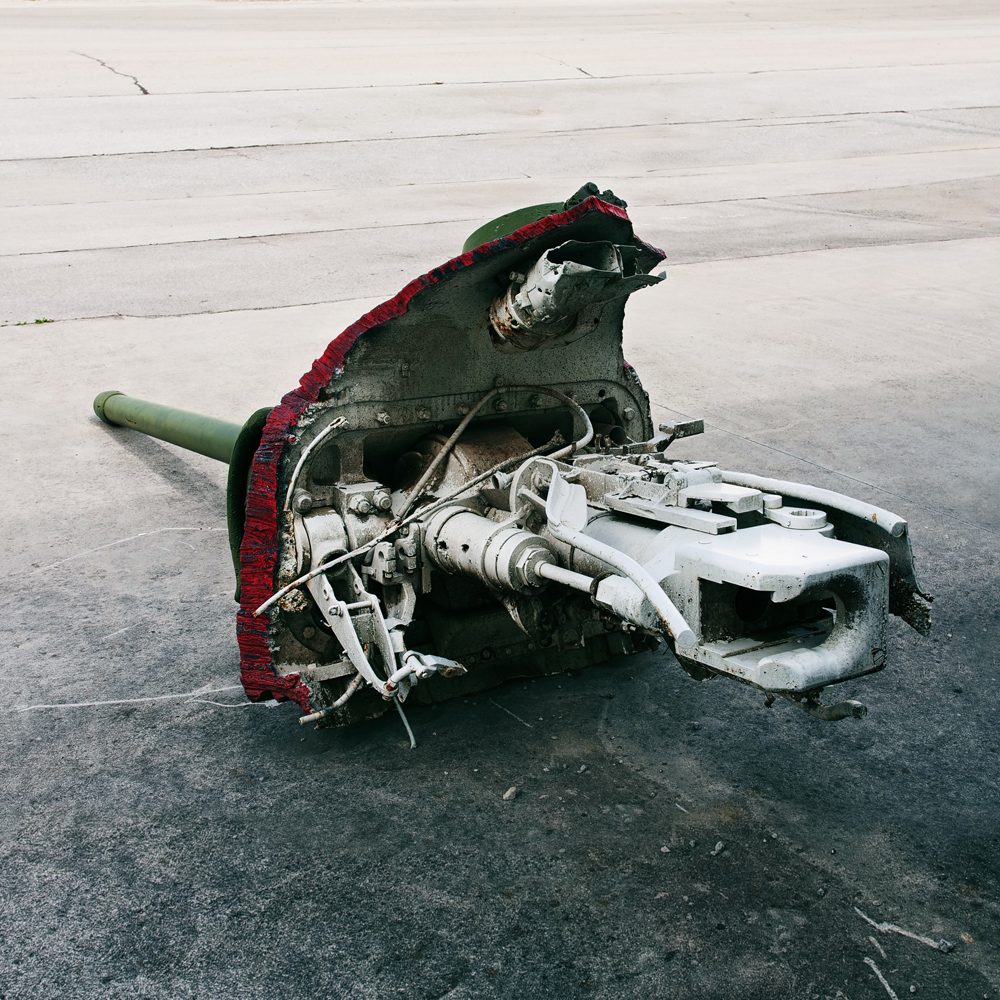-
AMX-50/120 surbaissé
Type: Heavy Tank
Nation: France
Period: Cold War
Location: Musée des Blindés, Saumur, France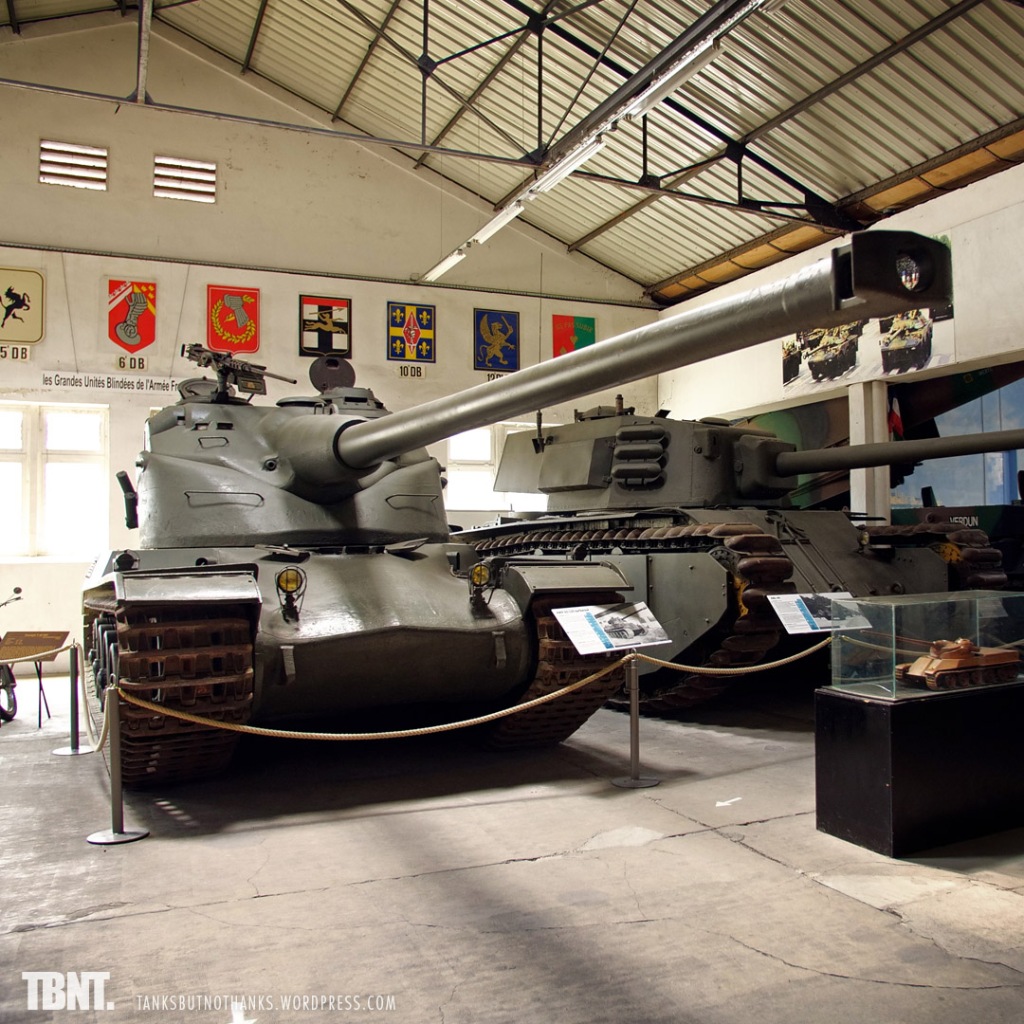
Cold war colossus
The AMX-50 was a French attempt to build a functional modern heavy tank intended to succeed the archaic ARL 44 in the 1950s. The first of only five prototypes was visibly inspired by the German Tiger II and carried a 90 (later 100) mm gun.
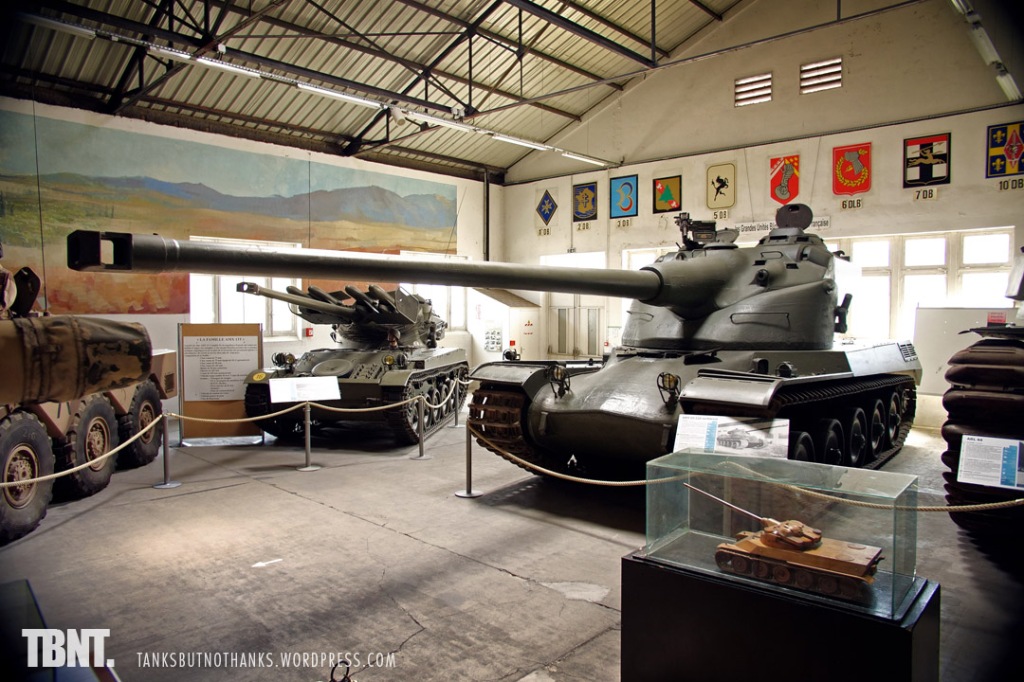
Keeping up with the Commies
Worried that this weapon would not be sufficient to defeat the Soviet IS-3, later prototypes were fitted with an semi-automatically loaded 120 mm gun in an oscillating turret – a futuristic concept that had already proved to work on the AMX-13 light tank.
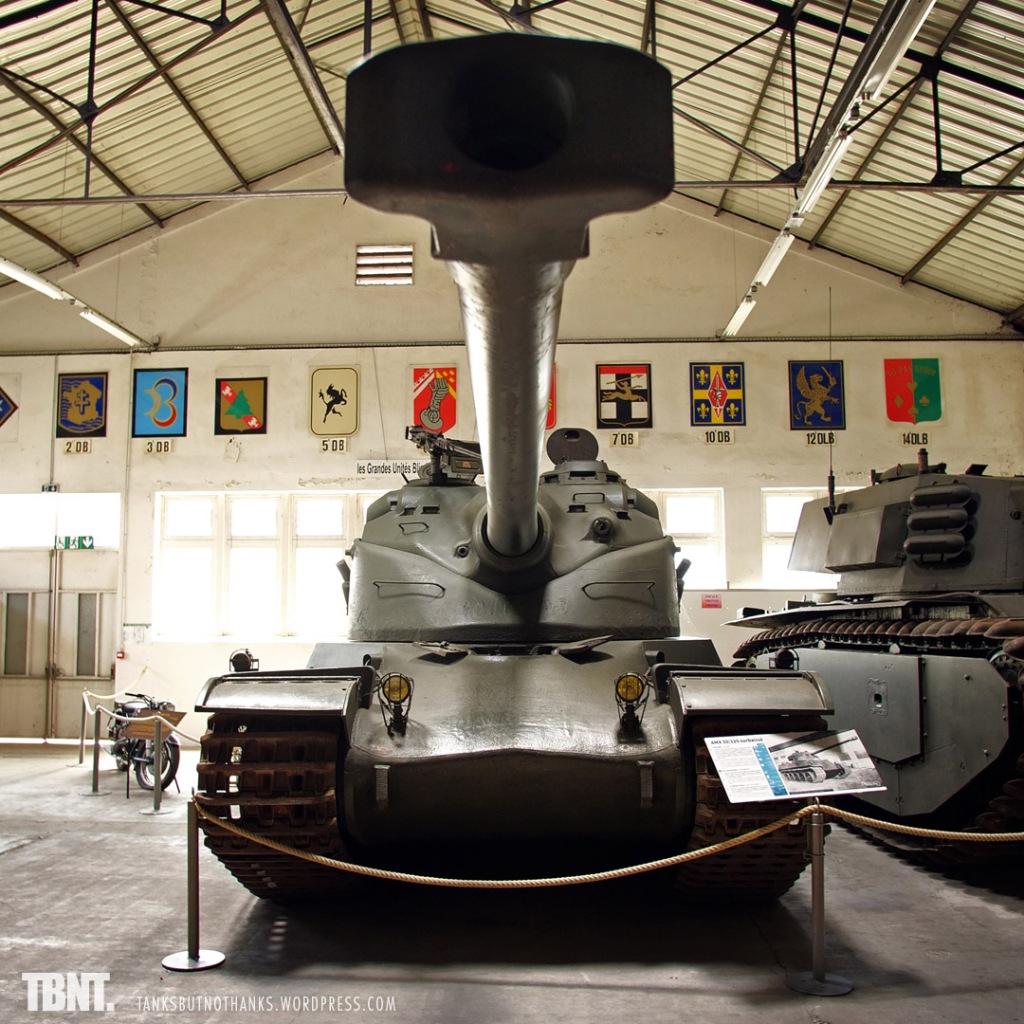
Last in line
This particular vehicle at the Musée des Blindés is the final prototype that was built in 1956. It was called AMX-50/120 surbaissé (= lowered) because it had a much lower hull. Weighing almost 58 metric tons, the tank’s massive scale caused all kinds of problems which ultimately led to the project’s cancellation in 1959.

Lighter legacy
The increasing proliferation of hollow-charge weapons had made tank designers change priorities from heavy armour to mobility; and thus the AMX-30 was developed, which vastly profited from the experiences the French had gained with the AMX-50 programme.
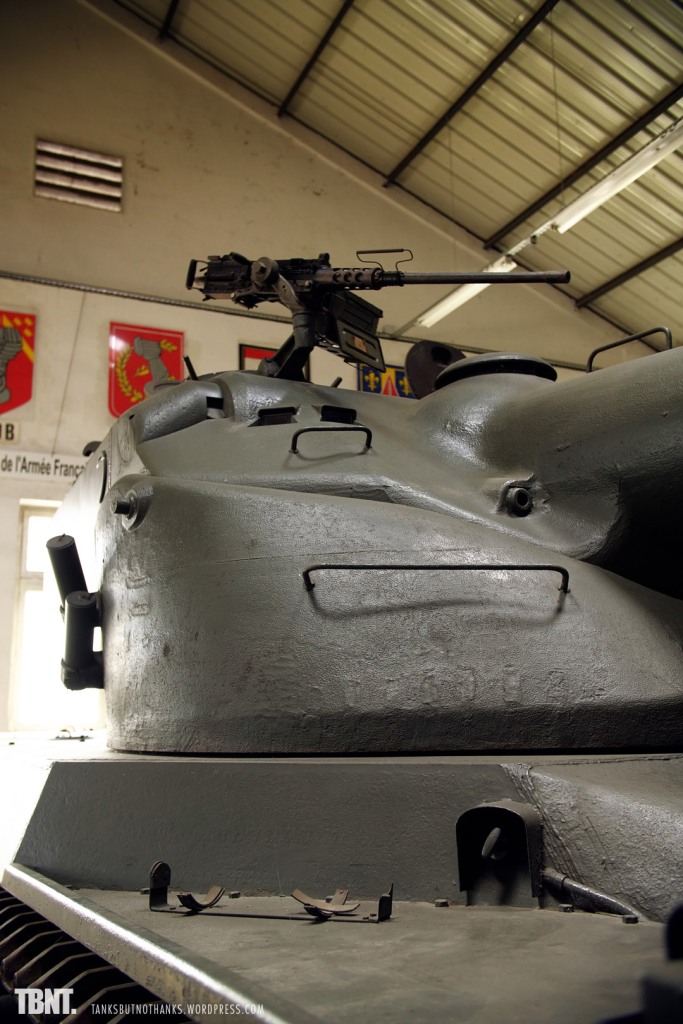
-
Light Tank M5A1 Stuart (Replica)
Type: Light Tank
Nation: USA
Period: World War 2
Location: Dead Man‘s Corner Museum, Carentan les Marais, France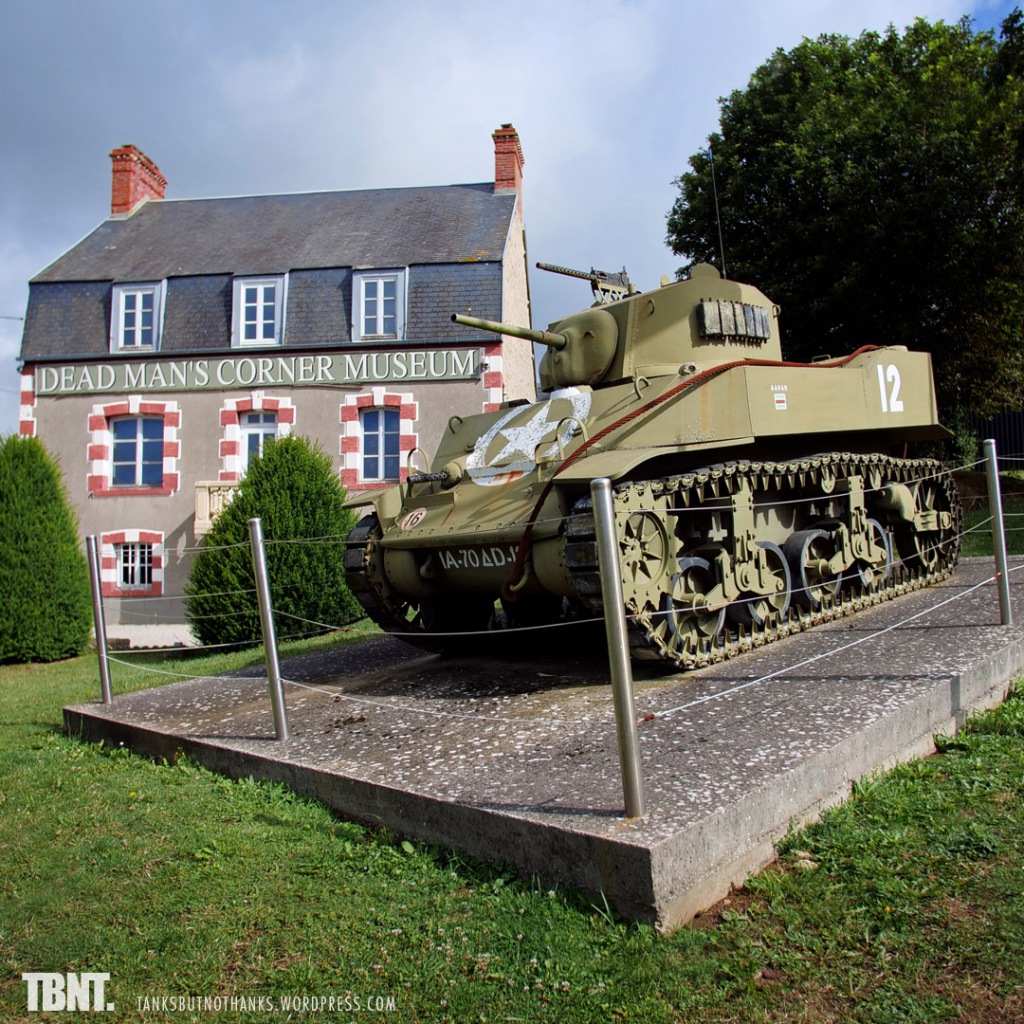
All in the family
The Light Tank M5 was an improved version of the M3 Stuart. It was developed from late 1941 to early 1942 to free up Continental W-670 engines which were needed for aircraft production. Instead of using the M3‘s radial engine the M5 series was powered by twin liquid-cooled Cadillac V8 automobile engines running into an automatic transmission. The M5‘s sloped glacis plate was then also implemented on the M3A3, from which the M5 can be distinguished by the raised engine deck to house the two engines. Otherwise, all these vehicles were very similar and they all carried the same 37 mm gun. The M5‘s chassis would also be chosen as the basis for the 75 mm Howitzer Motor Carriage M8, a light self-propelled artillery piece.
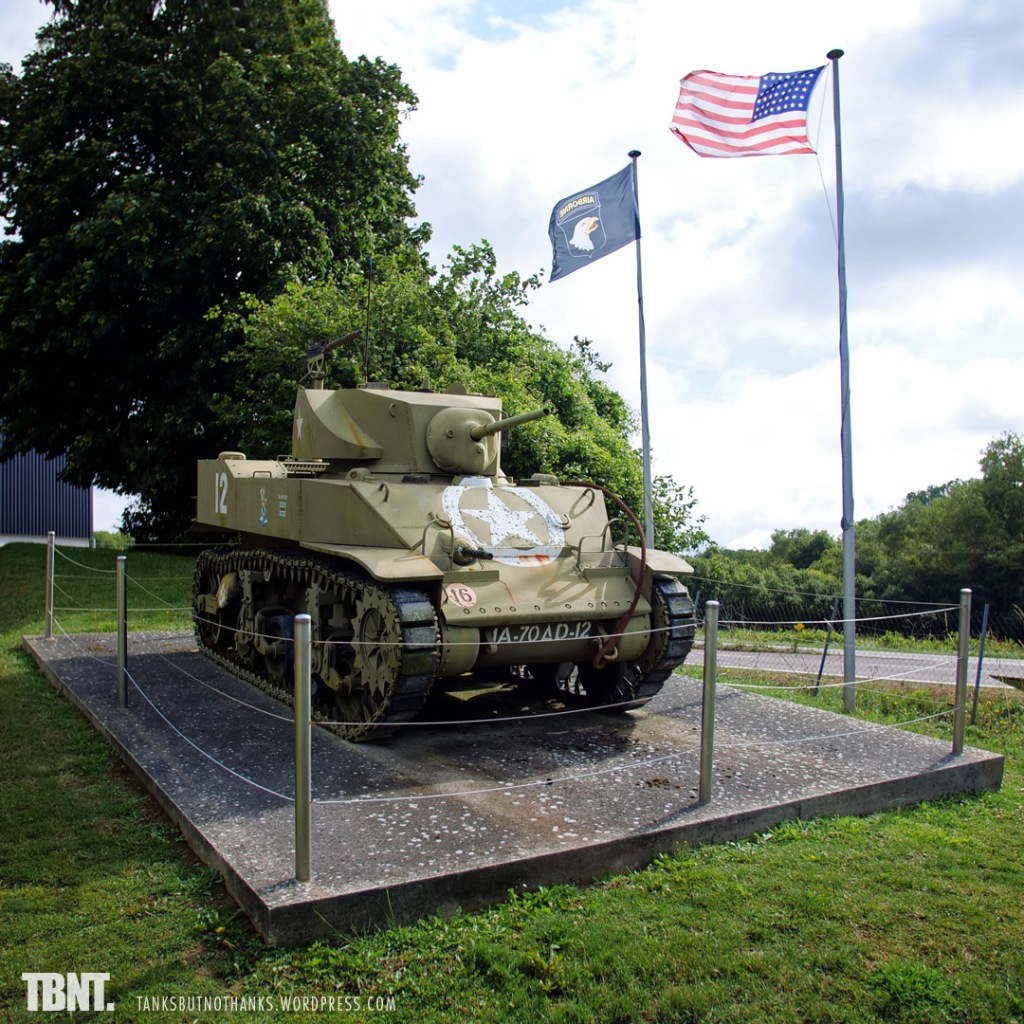
The British touch
In November 1942 the M5A1, the upgraded model of the M5, went into production. While the M5 had simply been equipped with the turret of the M3A1, the M5A1 received the turret of the M3A3, which can be identified by the overhanging bustle at the rear – a request by the British Army who liked having their tanks‘ radios in the turret. During development of the Medium Tank M3 Grant/Lee, they had already done the same, but on the light tanks it did not lead to two separate nation-specific versions. Both the M3 and M5 Stuart were extensively used by the Western Allies, but only the M3 was supplied to the Soviet Union via Lend-Lease.
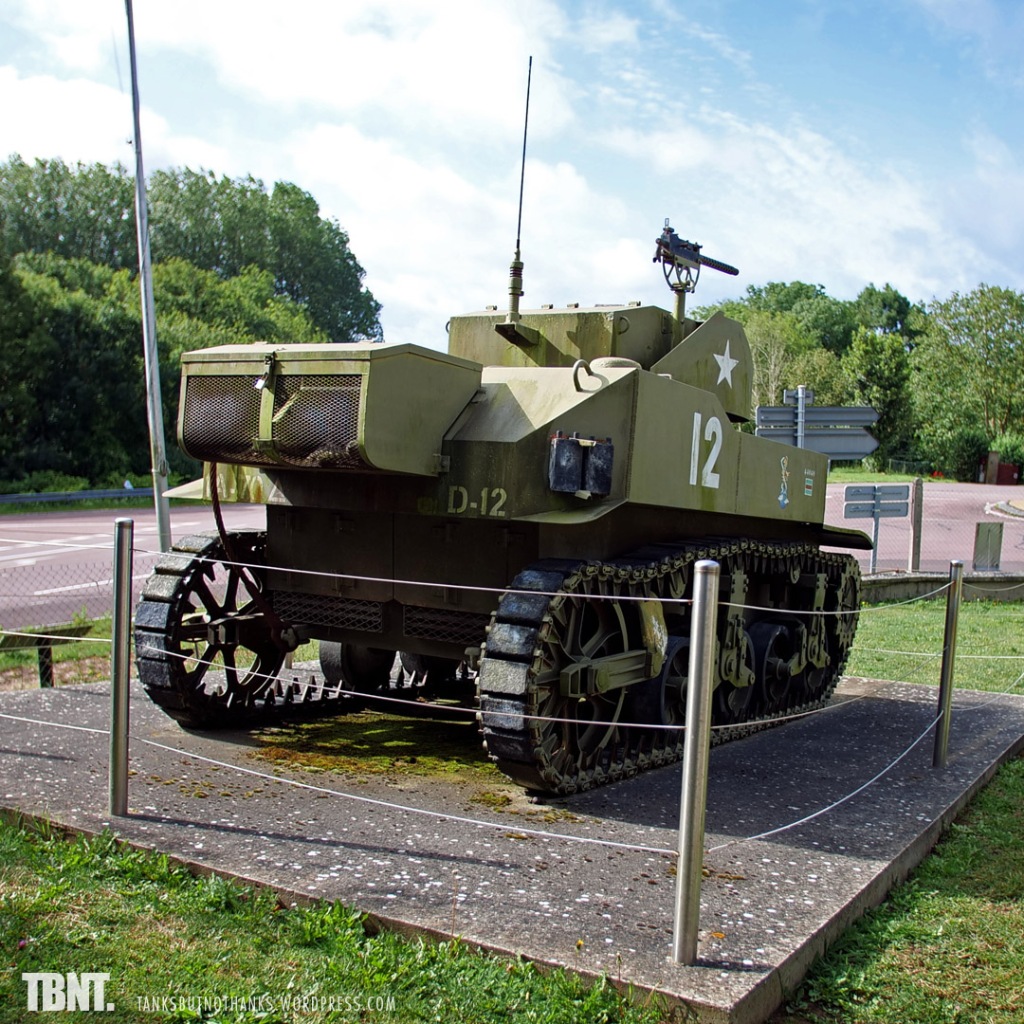
The dead man in the tank
This particular vehicle is located at the road junction which has become widely known as „Dead Man‘s Corner“. On 7 June 1944 – D-Day + 1 – the leading tank in a column of M5A1 Stuarts of the American 70th Tank Battalion, coming from Utah Beach and advancing on the town of Carentan, was knocked out by a German Fallschirmjäger‘s Panzerfaust. Its crew was killed and the commander‘s dead body remained hanging from his hatch for several days before he could finally be removed. The building at what the passing American 101st Airborne paratroopers called the „corner with the dead man in the tank“ had been used as a German command post and aid station. Today it houses the Dead Man‘s Corner Museum which is located right next to the newer D-Day Experience.
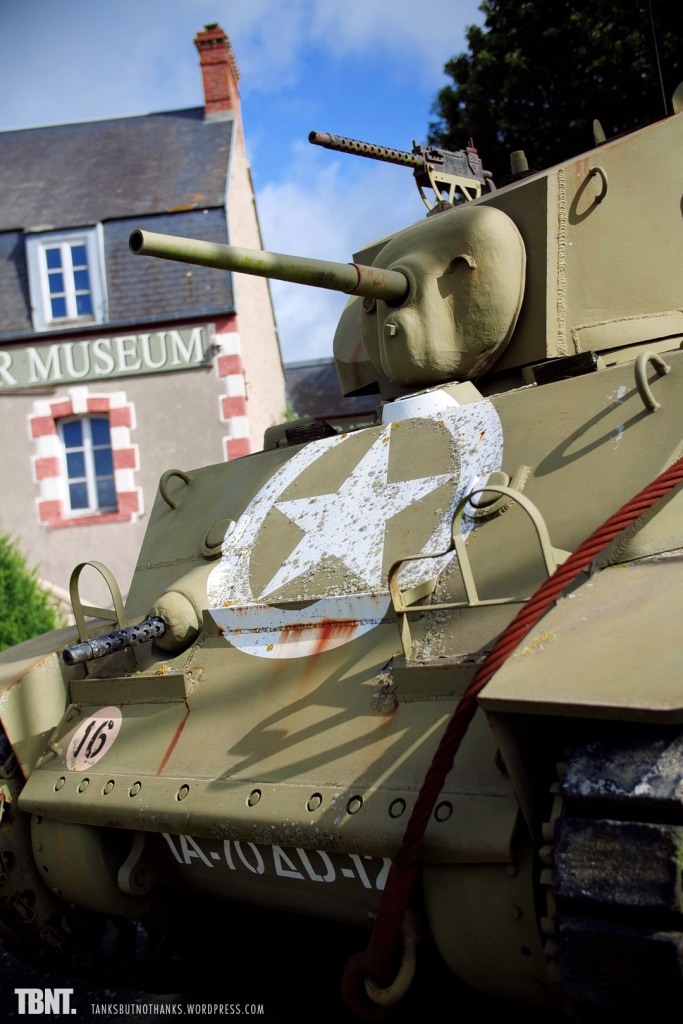
Almost perfect
The vehicle on display is not a real wartime tank but a very faithful steel replica with tracks made from concrete. Although it resembles a later model than the original tank destroyed at Dead Man‘s Corner (which did not have the late-production curved armoured storage box on the turret side to store a .30 calibre machine gun), it was painted with the correct markings: First United States Army, 70th Tank Battalion, D-12 for the second tank in D company’s third platoon and „Joe Peckerwood“, the armoured turtle which was the battalion‘s symbol.
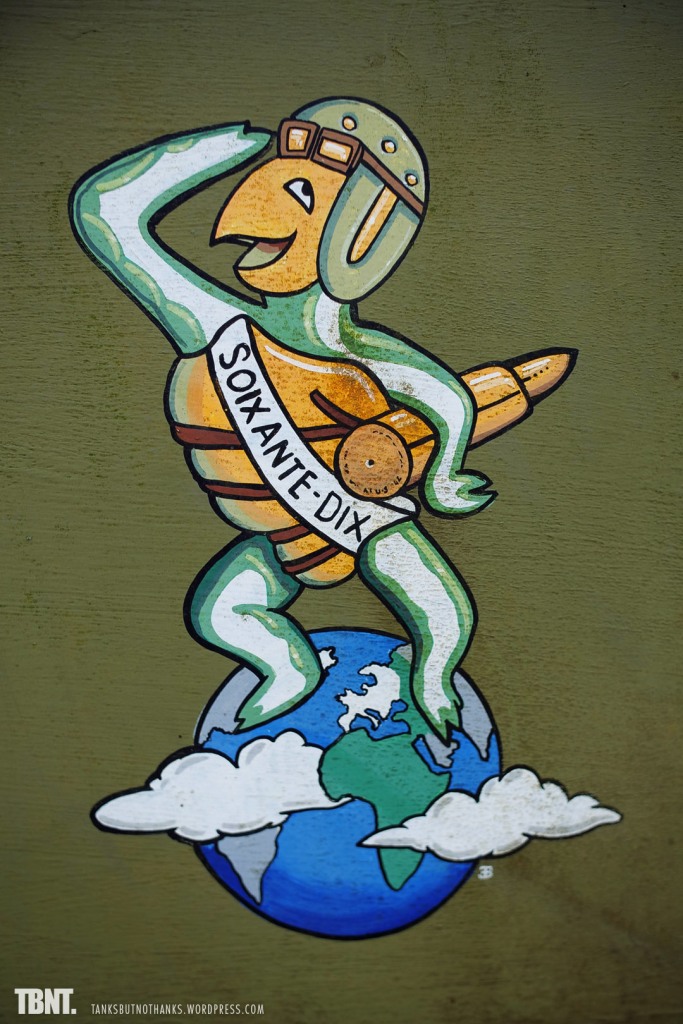
-
Centurion Mk 5/2
Type: Main Battle Tank
Nation: United Kingdom
Period: Cold War
Location: Nationaal Militair Museum, Soesterberg, Netherlands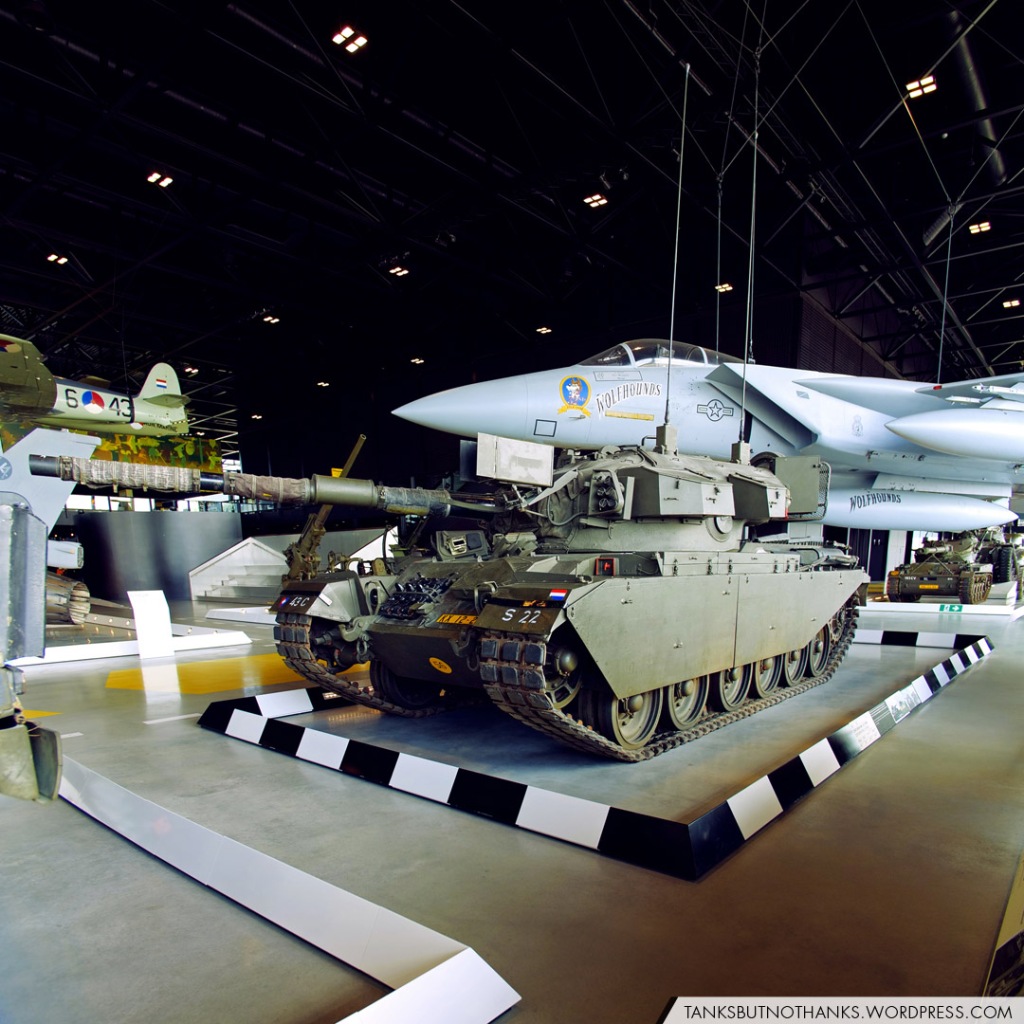
One size fits all
The Centurion is widely considered one of the best tank designs of all time. Its origins date back to 1943, when the development of a heavy cruiser tank was ordered. Up to that point, the British Army had strictly differentiated between fast cruiser tanks (such as the Crusader, Cromwell and Comet) and heavy infantry tanks such as the Matilda, Matilda II, Valentine and Churchill. Combining the merits of both classes, the Centurion was one of the first examples of a true „universal tank“, paving the way for the modern MBT.
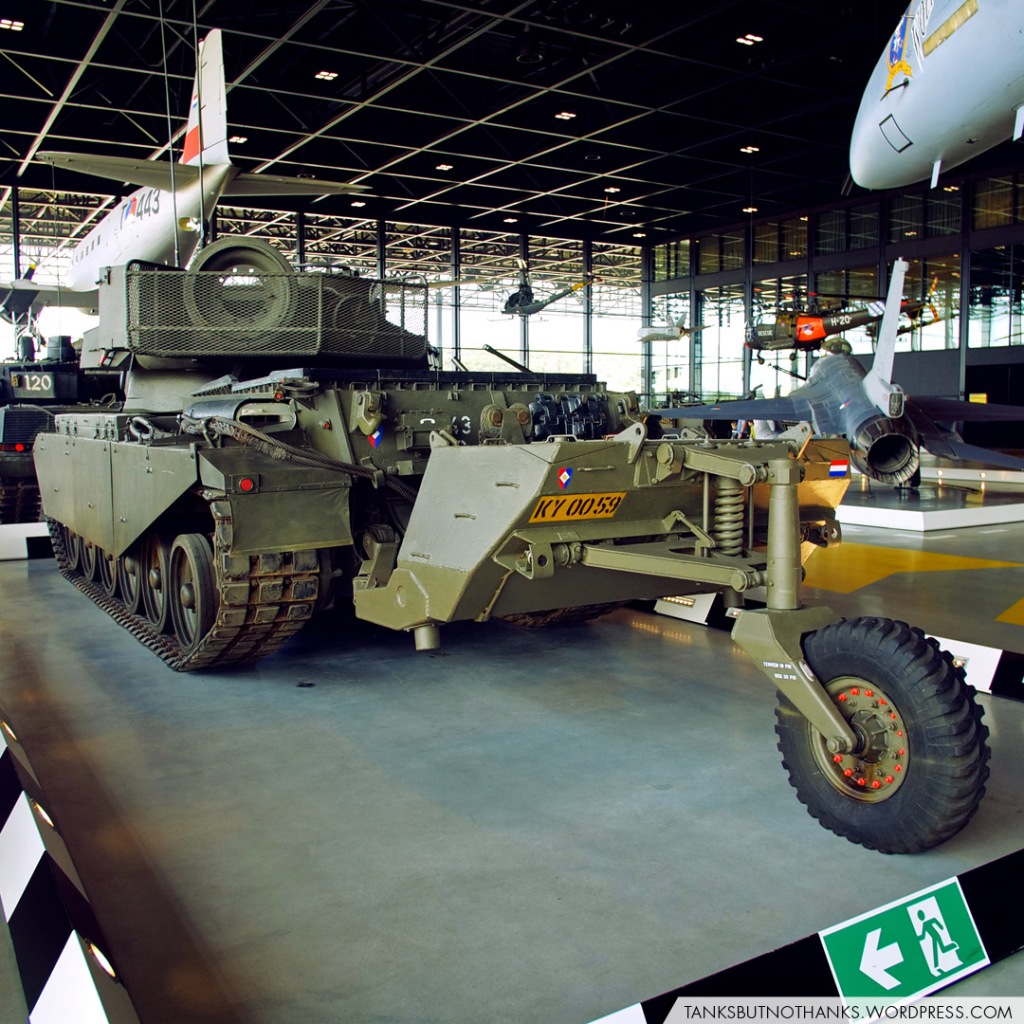
Pure potential
During World War 2 the British had come up with various ways to put their superb 17-pounder on an armoured vehicle. But while the Valentine Archer, A30 Challenger and even the Sherman Firefly had all been makeshift solutions to some extent, the Centurion Mk I was designed to carry the 17-pounder from the start. The strength of its design lay in the vast upgrade potential. For the first time the width of the vehicle was no longer constricted by the British railway specifications, which allowed for a bigger turret ring and thus the possibility of installing a bigger main armament – for example the 20-pounder gun in the Centurion Mk III.

Bestseller
This particular vehicle at the Nationaal Militair Museum is a Dutch Mk 5/2, the first model to carry the legendary 105 mm Royal Ordnance L7 gun. This weapon was first introduced in 1958 to counter the Soviet T-54/T-55 and was to be installed in many western vehicles of the Cold War era, such as the American M60 and M1 Abrams, the West German Leopard 1 and even the Israeli Merkava Mk. I. Centurions were widely exported to around 20 countries, where they would sometimes be operated way into the 21th century. Starting in 1953, the Dutch Army received around 600 of them to replace their ageing Shermans and Rams. This vehicle is towing the awkward Monotrailer, which held over 900 litres of extra fuel to extend the thirsty Centurion‘s range. Trying to reverse with one of these on rough terrain could end in disaster, which is why the idea was dropped relatively quickly.

-
Leopard 2A6MA3
Type: Main Battle Tank
Nation: Germany / Netherlands
Period: Modern
Location: Brandenburg an der Havel, Germany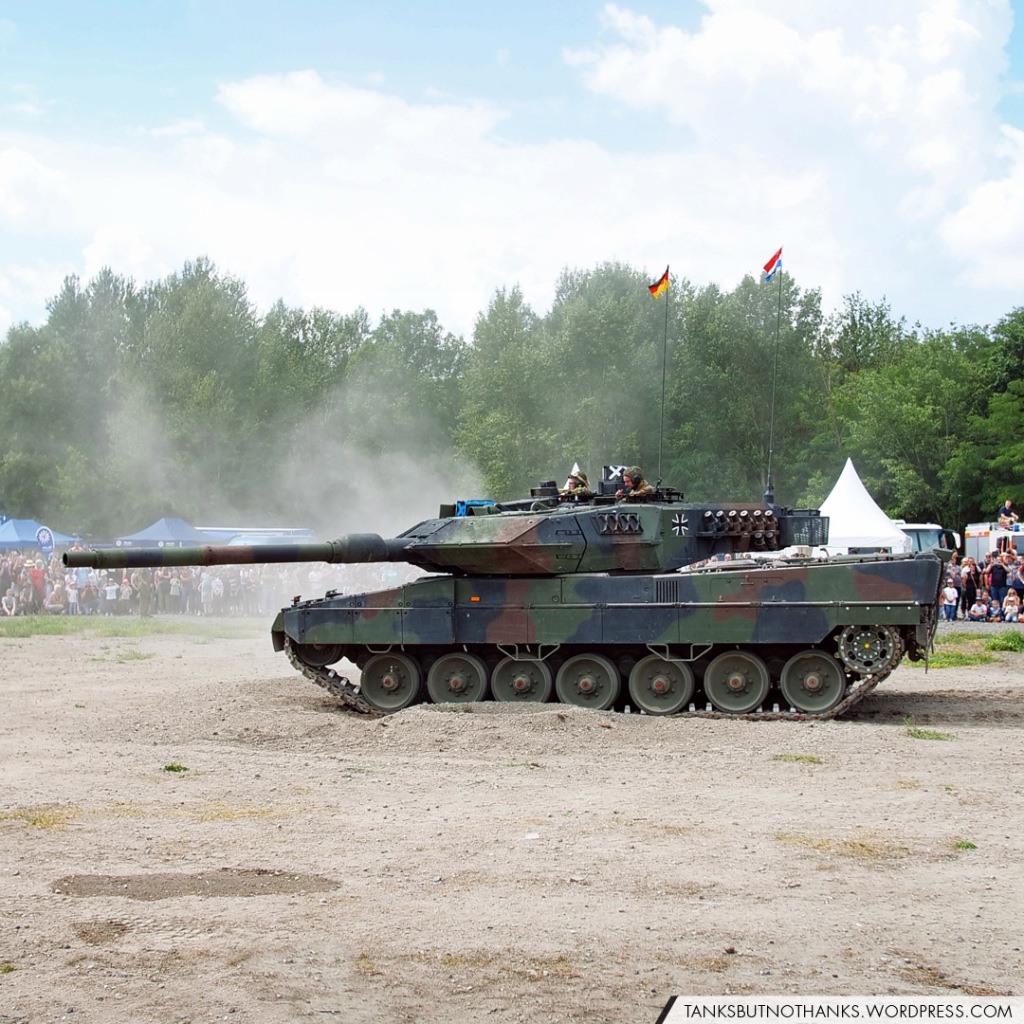
Setting the standard
The Leopard 2 was developed in the 1970s as a replacement for the ageing Leopard 1. After the joint US/German MBT-70 program had been cancelled, both countries went separate ways – resulting in the M1 Abrams and the Leopard 2. The first series vehicle was handed over to the West German Bundeswehr in October 1979. The new “Leo” was the first western tank to introduce a 120 mm smoothbore gun, which today has become the standard for many modern main battle tanks such as the American M1A1/M1A2 Abrams, the French Leclerc or the latest Merkava versions from Israel. Thanks to its two-axis stabiliser and sophisticated fire control system, the Leopard 2 could (and still can) fire on the move and reliably hit moving targets – a significant advantage over potential contemporary opponents such as the Soviet T-72.
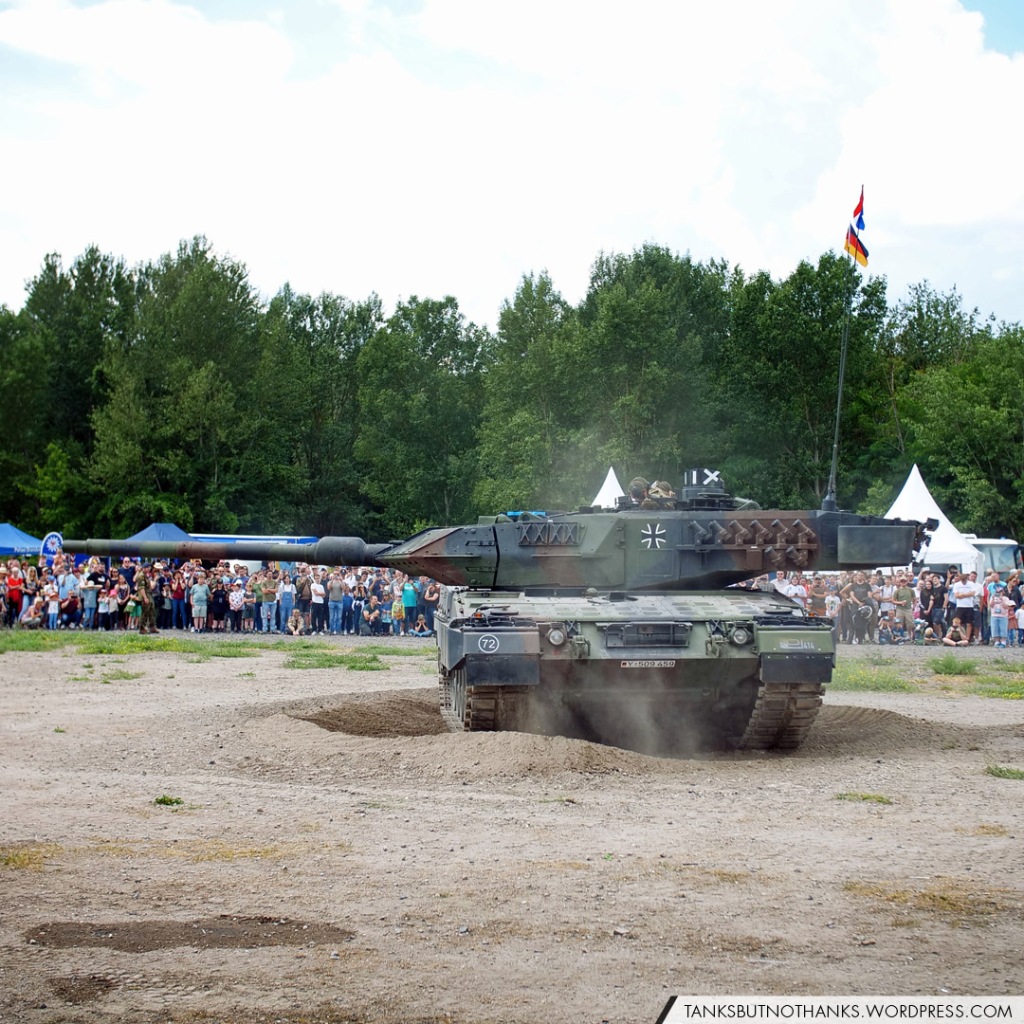
Life-extending measures
Over the decades numerous upgrades have been implemented to keep the Leopard 2 up to date and extend its service life way beyond what the tank had originally been designed for. From the A5 version onwards the distinctive wedge-shaped spaced armour was added to the turret front, the commander’s periscope was equipped with a thermal imaging module and the hydraulic gun control system was replaced with an electric one. The A6 received a longer and more potent L/55 gun and the A6M had additional mine protection features such as a belly armour plate.

Unique cooperation
This particular vehicle belongs to the Dutch-German Panzerbataillon 414. It is an A6MA3, which is a conversion with the mine protection of the A6M and several other features known from the even more modern A7V; for example additional frontal hull armour, different radios and “SPECTUS” sensor heads on the front and rear to assist the driver. Since the Dutch Koninklijke Landmacht is using the “Elias” Battlefield Management System” and the German Bundeswehr the IFIS, the 414’s tanks were modified so that they can be equipped with either system. The photos show the vehicle during a presentation at the “Tag der Bundeswehr 2023” event in Brandenburg an der Havel, Germany.
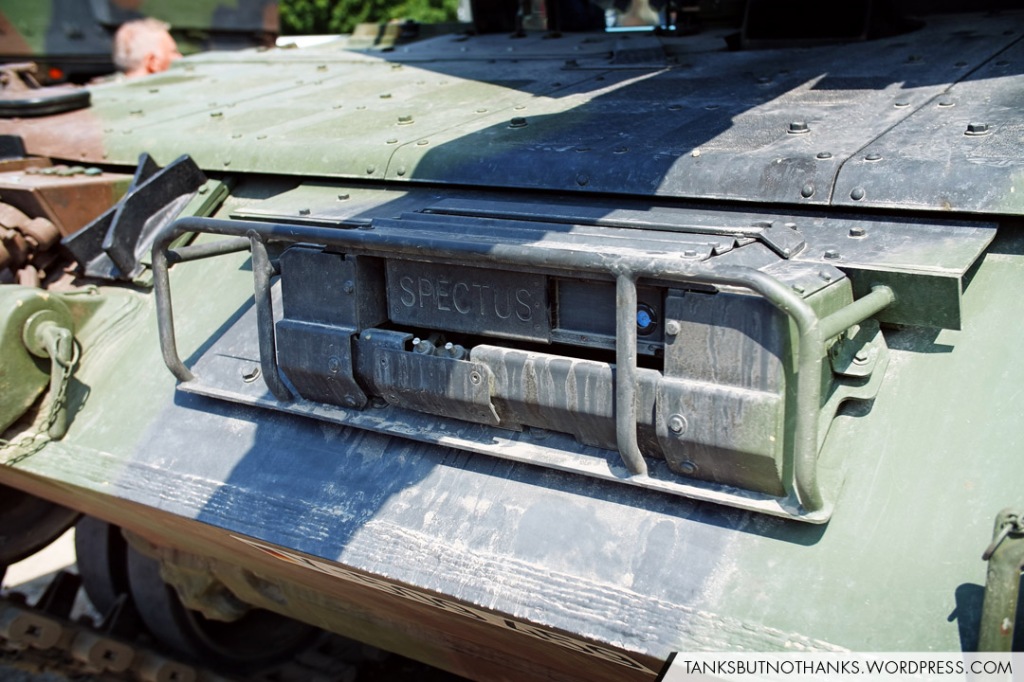
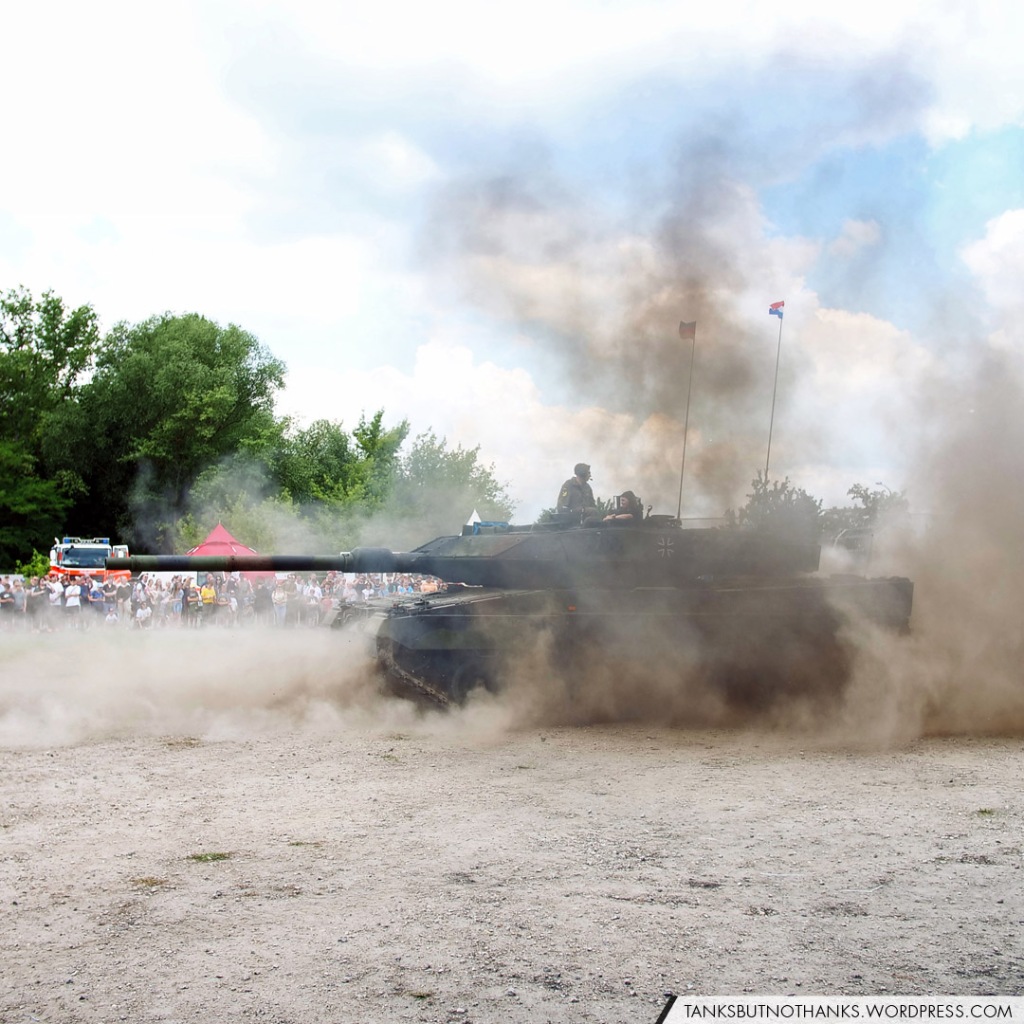
-
Jagdpanzer 38 „Hetzer“ (Sd.Kfz. 138/2)
Type: Tank Destroyer
Nation: Germany
Period: World War 2
Location: Bastogne War Museum, Belgium
Caught on the back foot
Following their 1941 invasion of the Soviet Union, Nazi Germany’s troops were facing an ever-increasing number of enemy tanks on the Eastern Front. Craving for capable anti-tank vehicles, the Germans upgunned their Panzer IIIs, Panzer IVs and Sturmgeschütz assault guns and pushed for the creation of a variety of improvised “Panzerjäger” (= tank hunter) vehicles based on the hulls of outdated tank models. On 26 November 1943 the Alkett factory in Berlin was bombed, which seriously interrupted production of the StuG III. The StuG IV was introduced as a substitute, while at the same time Böhmisch-Mährische Maschinenfabrik AG (BMM) in Prague was considered to be turned into an additional manufacturing site for the 24-ton StuG III. But since the cranes at their facilities were not capable of lifting such heavy vehicles, a new and lighter type of Panzerjäger was to be constructed there instead.
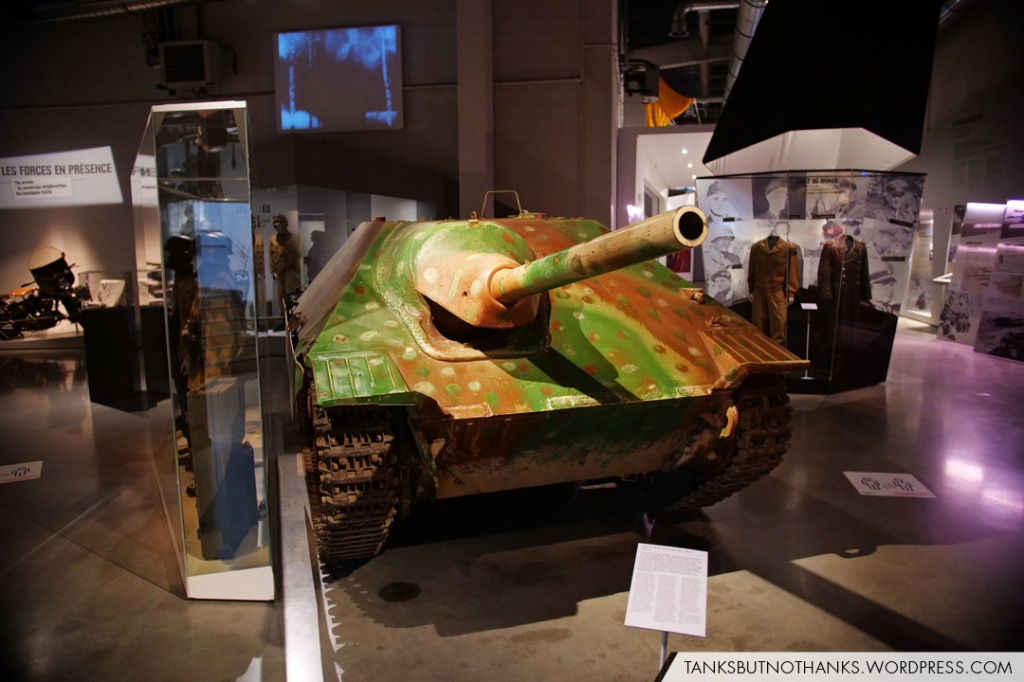
Lookalike
The Panzer 38(t) – by this time obsolete as a gun tank – had already been used as the basis for the open-top Panzerjäger Marder III, which carried an effective gun but suffered from its high silhouette and the lack of crew protection. The new Jagdpanzer 38 was derived from the same reliable vehicle. But in the end almost none of the original parts remained unchanged: The hull was wider, the road wheels larger and the suspension system sturdier to cope with the extensive extra weight. It was thus a completely new purpose-designed machine, not just another improvisation. The vehicle went through numerous name changes throughout its history, but its popular nickname “Hetzer” was never an official German designation during World War 2. This term was in fact used as the name for a whole class of small tank destroyers.

The original G
This particular vehicle at the Bastogne War Museum is made up to look like a wartime Jagdpanzer 38 in German service – including the distinctive “ambush camouflage” paint scheme. The Germans used around 300 Jagdpanzer 38s during the Battle of the Bulge in December 1944 and January 1945. However, this one was built after the war for the Swiss Army who designated it “Panzerjäger G13”. “G13” had been an internal factory code at Škoda during World War 2. The G stood for a “Panzerjäger”, 1 for “light” and 3 for the third model after G11 (Panzerjäger I) and G12 (Marder III).
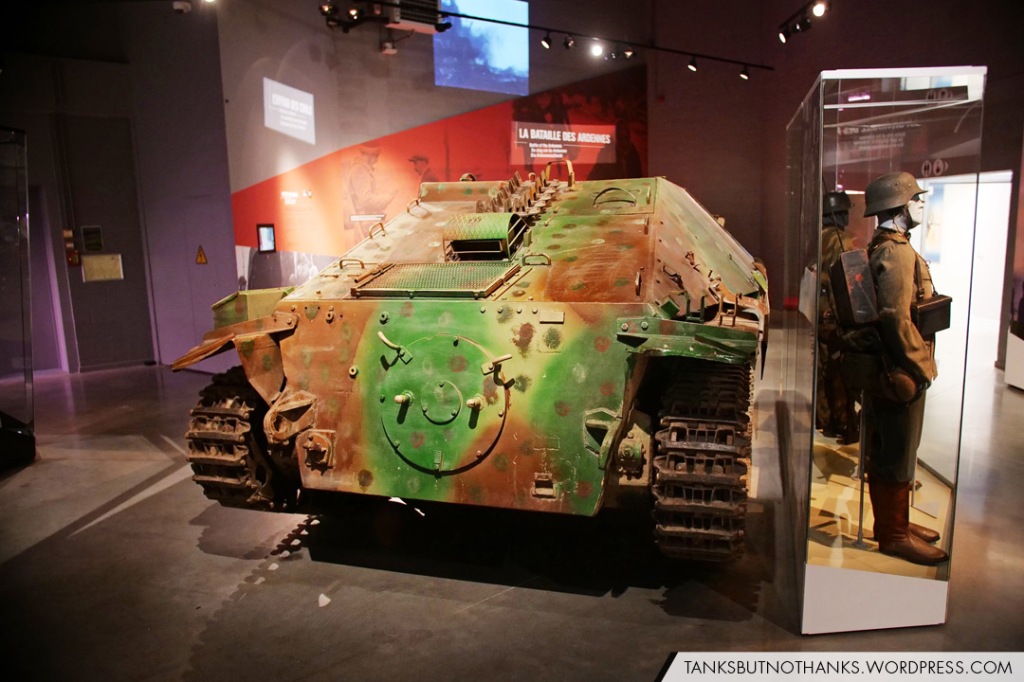
-
Panzerkampfwagen IV Ausf. G/H (Sd.Kfz. 161/2)
Type: Medium Tank
Nation: Germany
Period: World War 2
Location: Technik Museum Sinsheim, Germany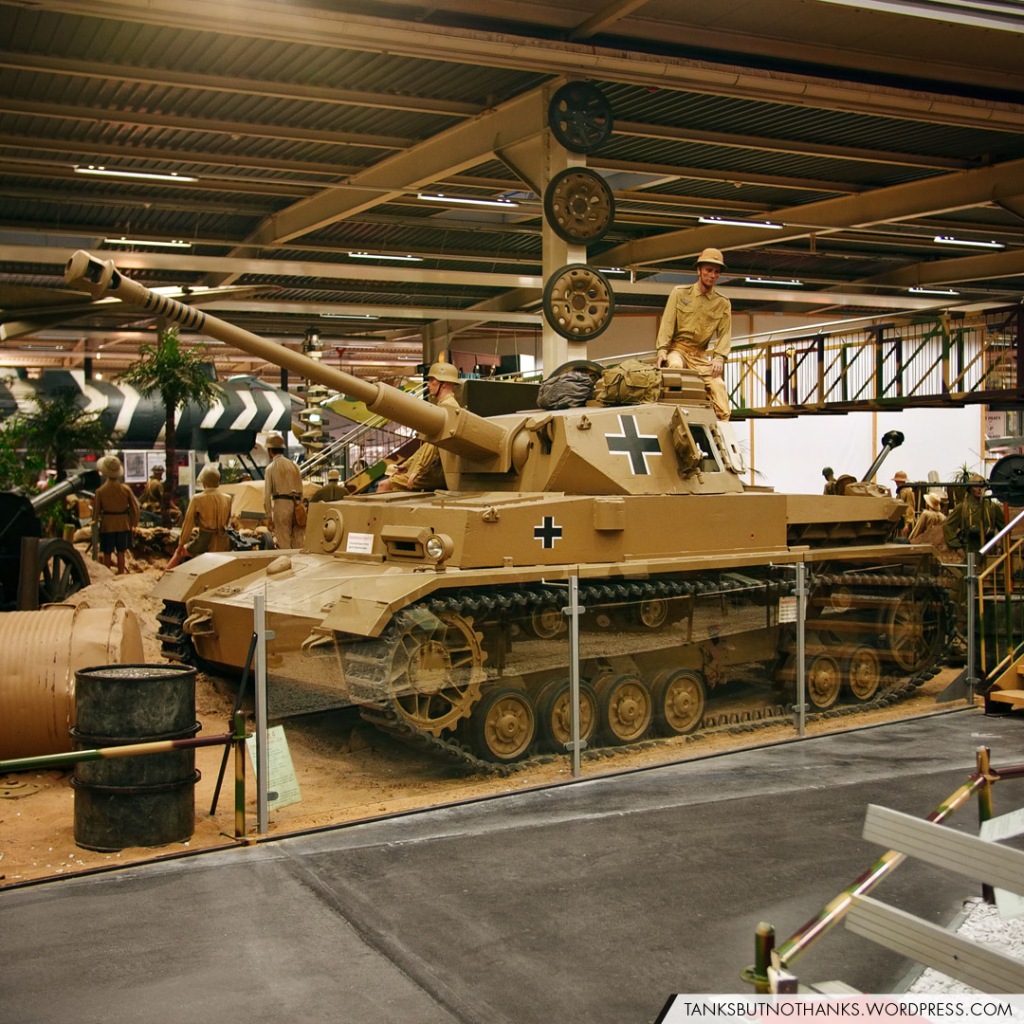
Steel siblings
The first batch of the early Panzerkampfwagen IV was delivered to the Wehrmacht until 1938. With approximately 8,500 units built until 1945, it became the most produced German tank of World War 2. Like its companion, the very similar Panzerkampfwagen III, its design principles had been specified as early as 1934, when Nazi Germany had started to build up its future armoured forces in the wake of Hitler’s seizure of power. While the Panzer III was intended to fight enemy armour with its 3.7 cm anti-tank gun, the Panzer IV was equipped with a short 7.5 cm howitzer for close support.

Role reversal
However, in early 1942 the two medium tanks’ roles began to change with the introduction of a long-barrelled 7.5 cm L/43 high velocity gun on the Panzer IV Ausf. F2. As the Panzer III had reached the end of its upgrade potential due to its smaller turret ring, the Panzer IV was able to take more powerful guns and thus became Nazi Germany’s new primary tank for the rest of the war.
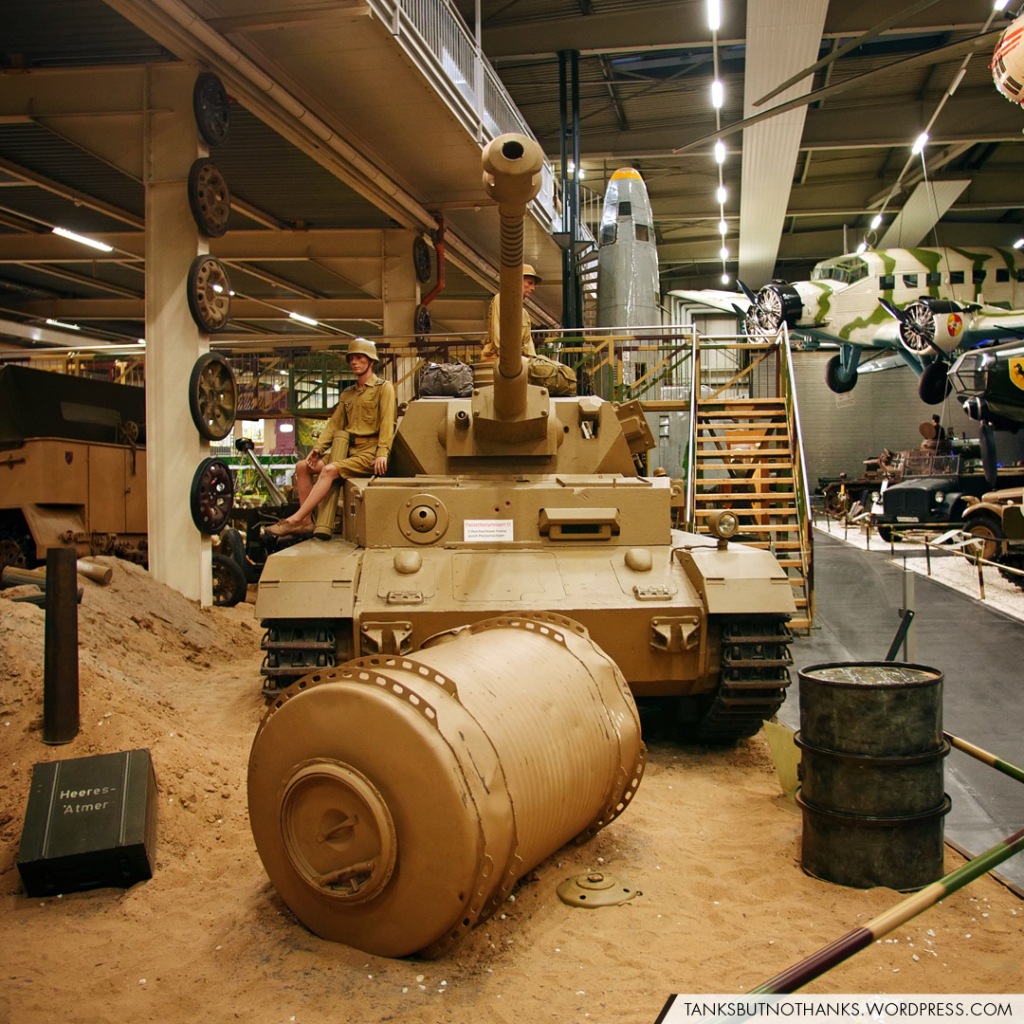
Designation dilemma
This particular vehicle at the Technik Museum Sinsheim is claimed to be an Ausf. G, but this seems to be either wrong or a simplification. The turret might in fact come from a late Ausf. G since it has the long L/48 gun (the Panzer IV‘s final main armament upgrade) and no side vision ports (which had been omitted starting in April 1942 when production of the Ausf. G was in full swing) – but as there are no drivers’ side vision ports in the hull, the chassis looks more like an Ausf. H. Furthermore, the glacis plate is lacking the openings for the driver’s binocular periscope (a feature that was deleted from the Ausf. G in February 1943) and the all-steel return rollers were first introduced on the Ausf. H in October 1943. One way or another, this tank is substantially damaged: The frontal plate was penetrated three times by anti-tank rifle rounds and the lower left flank was allegedly hit by several American 76.2 mm shells. The Deutsches Afrika Korps received a small amount of upgunned Panzer IVs (which the British at the time called “Mark IV Specials”) before the Second Battle of El Alamein, where they would fight against M3 Grants and the brand-new M4 Shermans. It is not clear though if this very vehicle has ever been used in the desert, despite its DAK paint scheme.
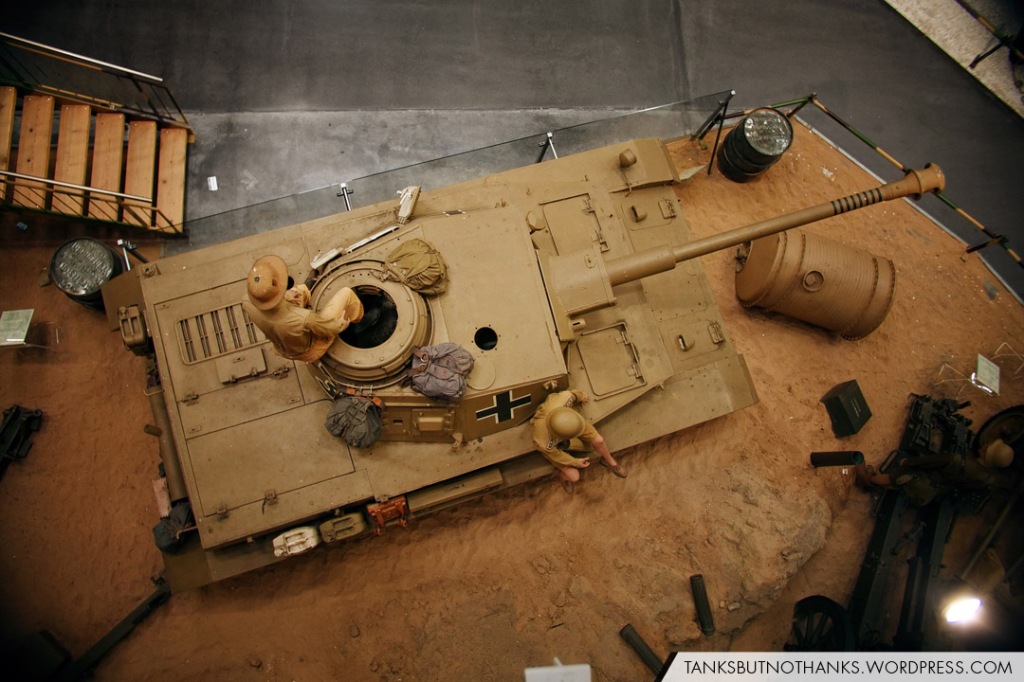
-
Panzerkampfwagen III Ausf. L (Sd.Kfz. 141/1)
Type: Medium Tank
Nation: Germany
Period: World War 2
Location: The Tank Museum, Bovington, UK
Anti-tank tank
The Panzerkampfwagen III was one of Nazi Germany’s two primary early war medium tanks. First conceived in 1934 with a 3.7 cm anti-tank gun, it was supposed to take on enemy armour while the slightly bigger Panzerkampfwagen IV was conceptualised as an accompanying support vehicle. By the time the Germans invaded Poland only a handful of Panzer IIIs were operational, but by the summer of 1941 the Panzer III had become one of the most numerous tanks in the Wehrmacht.

Delayed upgrades
The Ausf. L model was introduced in December 1941 as a reaction to the “T-34-shock” on the Eastern Front. Already shortly after the experiences in France in the summer of 1940 Hitler had personally demanded the installation of a better gun in the form of a long 5 cm L/60. An extra 20 mm of “Vorpanzer” spaced armour was added on the hull and turret front, bringing the vehicle’s weight up to 22.3 metric tons. From 1942 onwards the Panzer III was gradually replaced by the upgraded Panzer IV which could carry ever more powerful guns. Around 1,470 Panzer III Ausf. Ls were built until October 1942.

Short service
This particular vehicle was built in mid-1942 and then almost immediately shipped to Libya. It is believed to have been captured at the Battle of Alam Halfa in the beginning of September 1942 before it was brought to the UK for analysis – just like its bigger and more famous cousin Tiger 131 the year after.

Rough conditions
To cope with the desert conditions some “Tropen” modifications were provided for Panzer IIIs headed for North Africa, for example mushroom covers for the air intakes on the engine deck. The “Vorpanzer” turret plate is missing from this tank, but the framework is still present on the mantlet.

Working order
The Tank Museum’s Panzer III is kept in running condition and can be seen in action at the annual “Tiger Day” and “Tankfest” events.

-
M4A4 FL-10
Type: Medium Tank
Nation: Egypt
Period: Cold War
Location: National Military Museum, Cairo, Egypt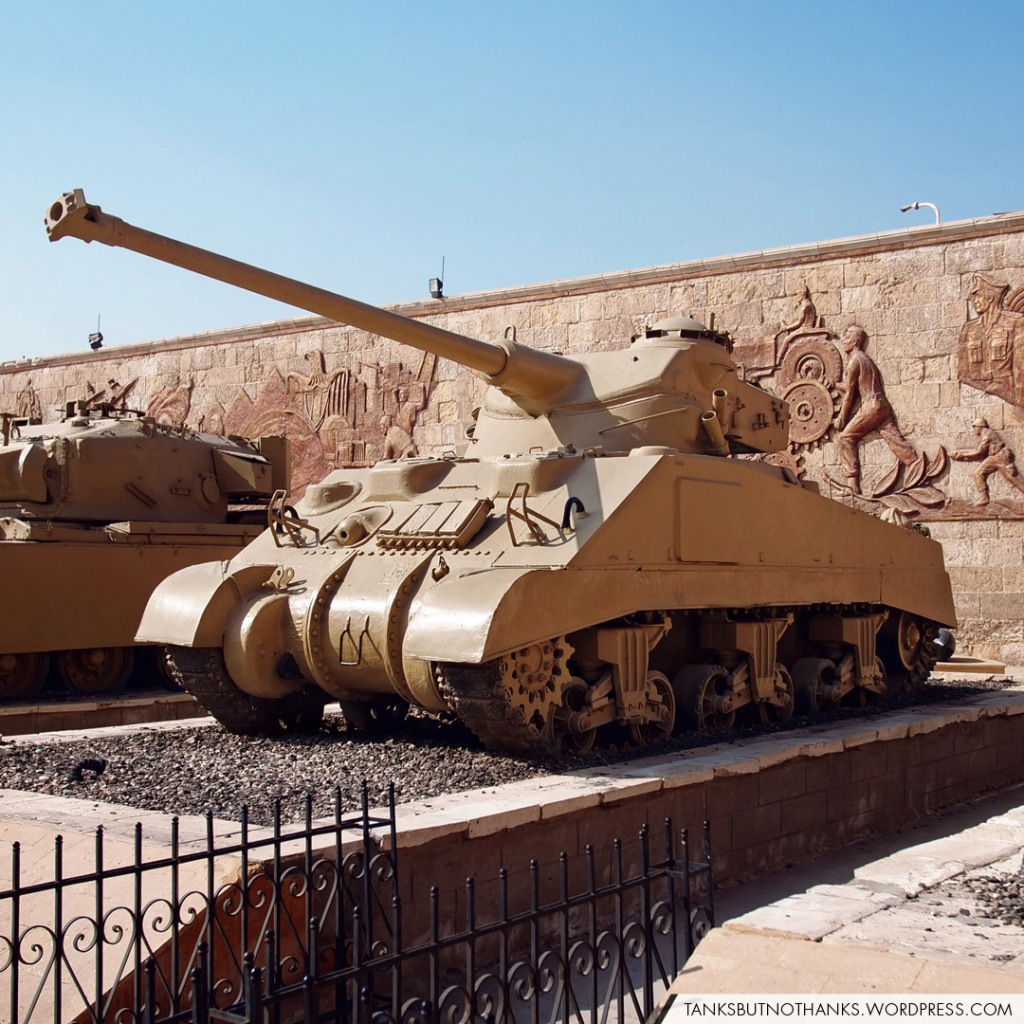
Frankentank
The M4A4 FL-10 was a not too creatively named up-armed Sherman version that combined the long M4A4 hull with the FL-10 oscillating turret taken from the AMX-13 light tank. This variant was designed and built in France for the Egyptian Army who received them in 1955 and went on to deploy it in several conflicts, starting with the 1956 Suez Crisis.
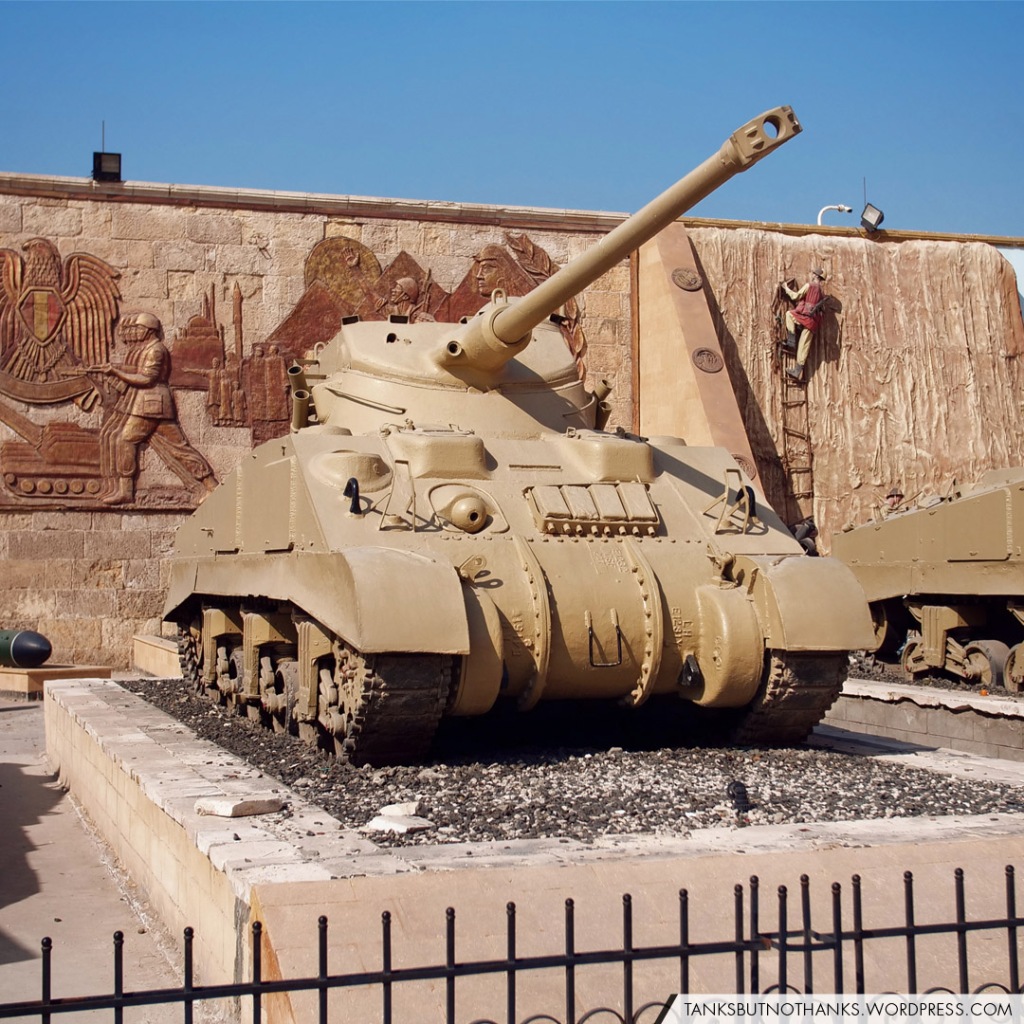
Heart transplant
For the sake of performance and serviceability the fifty converted vehicles were re-engined with GM 6046 twin diesel motors known from the M4A2. These changes are evident by the engine deck and the double exhaust mufflers. As the FL-10 turret featured an autoloader, the crew was reduced to four men.
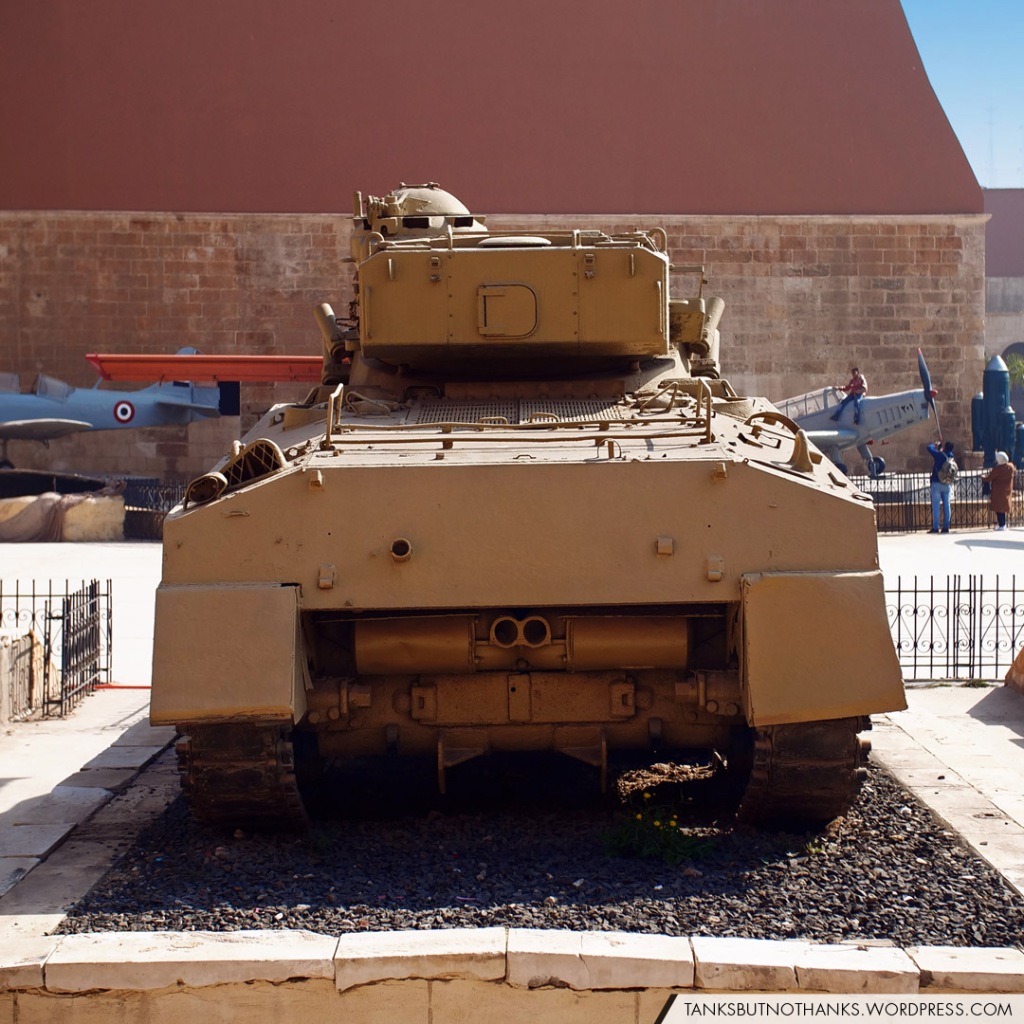
Opposing ideas
The long 75 mm gun was derived from the Panther’s feared KwK 42 and much more powerful than the Sherman’s original armament. But on the other hand the FL-10 turret’s armour was considerably weaker, as it had originally been designed for a light tank. The Israeli M-50 “Super Sherman”, developed around the same time (and also with the help of the French), incorporated the same weapon into a proper Sherman turret and thus did not suffer from this problem. Both tanks faced each other several times until the 1967 Six Day War, after which the few surviving Egyptian M4A4 FL-10s were removed from active service.
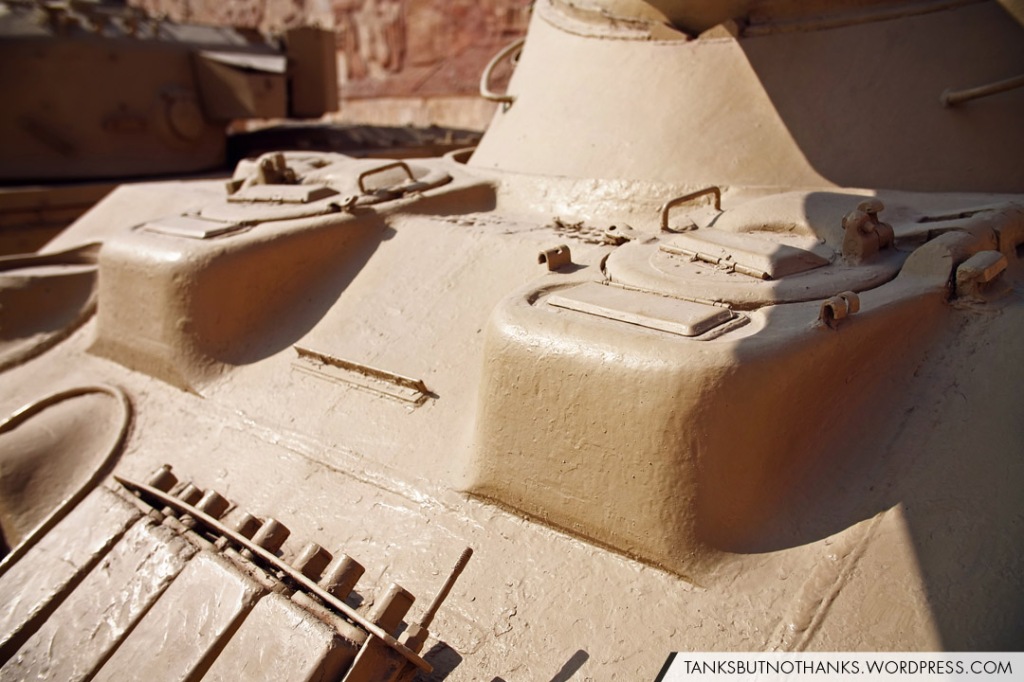
Unique collection
This particular vehicle is located at the Egyptian National Military Museum inside the Cairo Citadel. Given Egypt’s history during the Cold War era, it is exhibiting a long row of tanks, consisting of a wide variety of Western and Soviet-made vehicles from Centurion to PT-76, which all had been part of the Egyptian forces at some point. There is, however, no information given about these tanks‘ history.
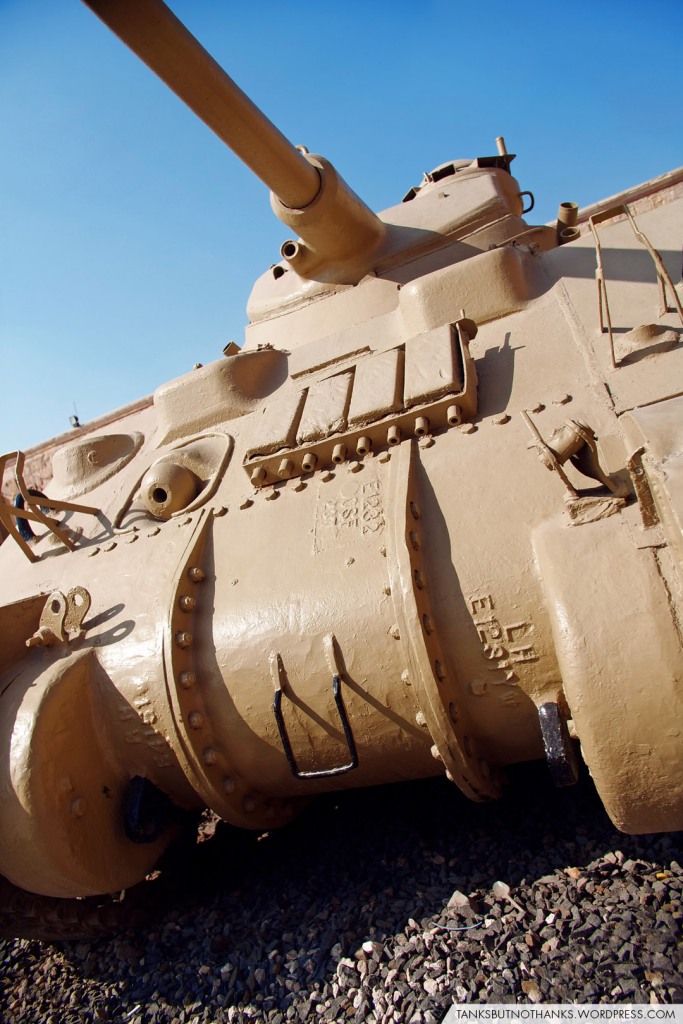
-
Sherman IC Hybrid Firefly
Type: Medium Tank/Cruiser Tank
Nation: United Kingdom
Period: World War 2
Location: Klein-Willebroek, Belgium
Best of both worlds
The “Composite hull” Sherman combined the welded hull of the standard M4 with a rounded M4A1-style cast front. Chrysler came up with this design in 1943, because a large part of the time-consuming welding work on the first generation M4 was spent on its overly complex glacis plate. By replacing this part, the tank became much easier and cheaper to build. The Composite M4s that left the Detroit Tank Arsenal in September 1943 were also the first “large hatch” Shermans to be produced. The Ordnance Board had initially ordered all of the upcoming second generation M4s, M4A2s and M4A3s to be built as Composites, until Fisher Body presented a ballistically superior one-piece glacis plate that made the Composite hulls obsolete in June 1943. However, as Chrysler had already changed the production lines, they went on to build the M4 Composite as a transitory model starting in August 1943. Some 300 additional large hatch Composites were produced by ALCO.
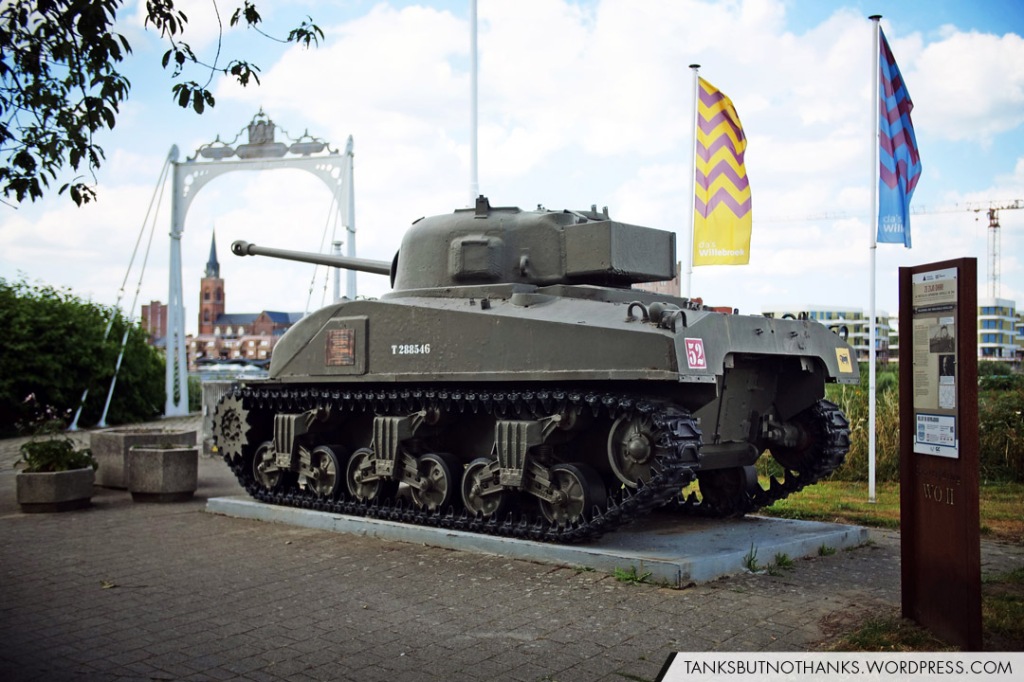
Between two stools
Chrysler’s 1,676 Composites were among the last 75 mm M4s to be built in January 1944. By that time, the Detroit Tank Arsenal had already started production of the M4(105), which was the only second generation version of the radial-engined M4 to be continued. Before switching to the large hatches, Chrysler had built approximately 50 small hatch Composites in August/September 1943 – but the exact production numbers are not entirely clear. The same unfortunately goes for the aforementioned ALCO vehicles. The terms “M4 Composite” and “late-production M4” have been popularised after the fact to differentiate this variant from the regular M4, but the official wartime documents never listed it as a separate model. Only the British Army gave it a proper designation when they received it under Lend-Lease: Sherman I Hybrid. The late-production M4 was a popular vehicle to be converted to the 17-pounder Firefly, because its turret already came with a loader’s hatch. This spared the British the time, work and money to cut one in, as it had been necessary on the M4A4. Of the approximately 2,100 Firefly conversions, almost half were made from M4A4s (Sherman VC), roughly the same amount from M4 Composites (Sherman IC Hybrid) and a small number from regular M4s (Sherman IC). According to the British system, the Sherman’s armament other than the standard 75 mm gun was indicated by the letter “A” for the 76 mm gun, “B” for the 105 mm howitzer and “C” for the British 17-pounder. Most of the M4 Composites in US service were shipped to the Pacific Theatre. In Europe, this type only saw limited service with the US Army.

Bypassed bridge
The Tankmonument Klein-Willebroek is located at the left bank of the River Rupel, where a large road bridge is connecting the small towns of Willebroek and Boom 10 kilometres south of Antwerp. On 4 September 1944 the British 11th Armoured Division successfully crossed this important bridge and liberated Antwerp on the same day. This was made possible thanks to the initiative of Robert Vekemans, a Belgian Army Engineer who had contacted the advancing British to make them aware of the smaller and less guarded wooden Veuve von Endschodt toll bridge just a few hundred metres upstream. The British lost no time, crossed the Rupel there with a handful of tanks and attacked the German troops stationed at the road bridge from the rear. Completely surprised, the Germans surrendered without any chance of demolishing the bridge as ordered. The small bridge was demolished after the war, but the remains can still be seen on both riverbanks. This particular large hatch Composite Sherman was produced by Chrysler in October 1943. The tank was fitted with a low-bustle turret with extra cheek armour and a closed pistol port which was common from spring to summer 1943. In November Chrysler replaced this type with the final high-bustle 75mm turret which left more room for the large hull crew hatches when traversing and which introduced an oval loader‘s hatch. After the war the tank was given to the Belgian Army who eventually retired it as a range target. The vehicle was placed at the southern end of the former toll bridge in honour of Robert Vekemans and the 11th Armoured Division.

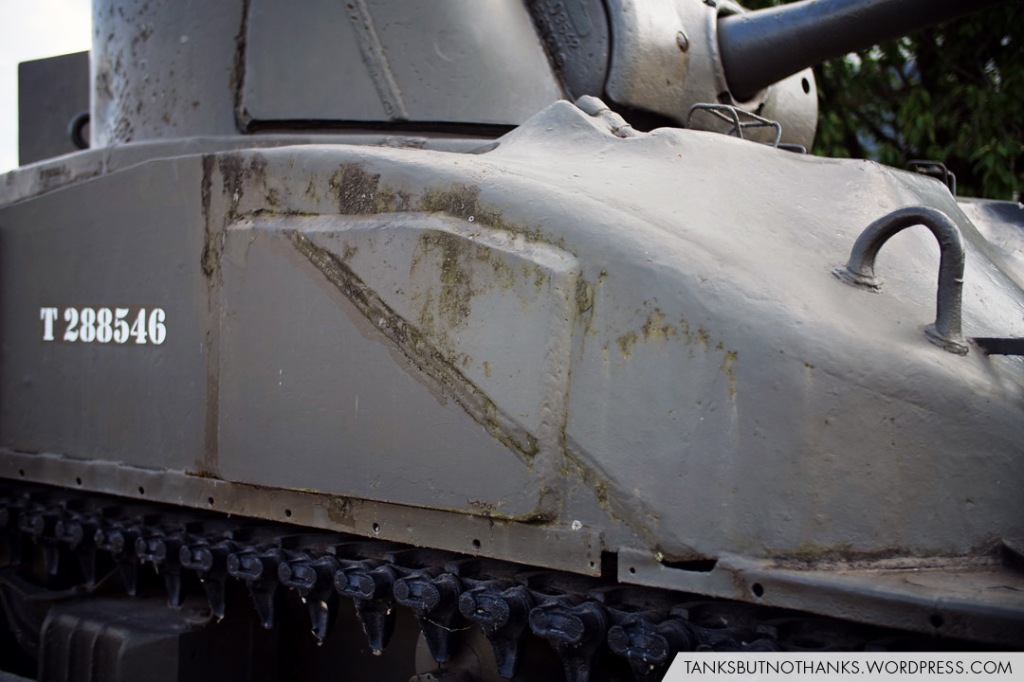
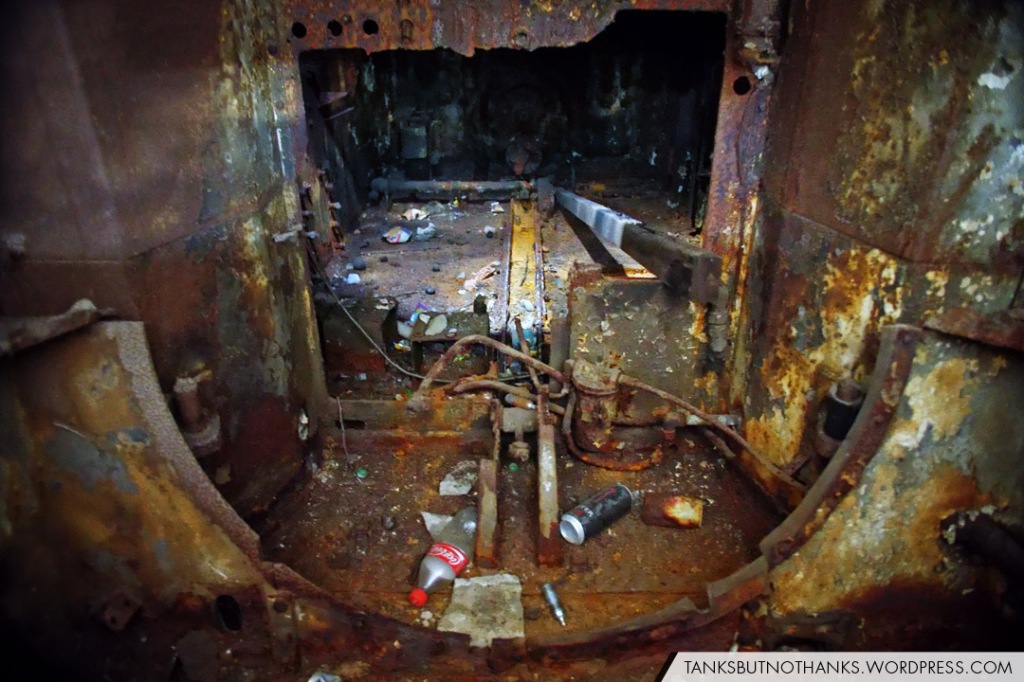
-
Grizzly I „Robin Hood“
Type: Medium Tank/Cruiser Tank
Nation: Canada
Period: World War 2
Location: Vrijheidsmuseum, Groesbeek, Netherlands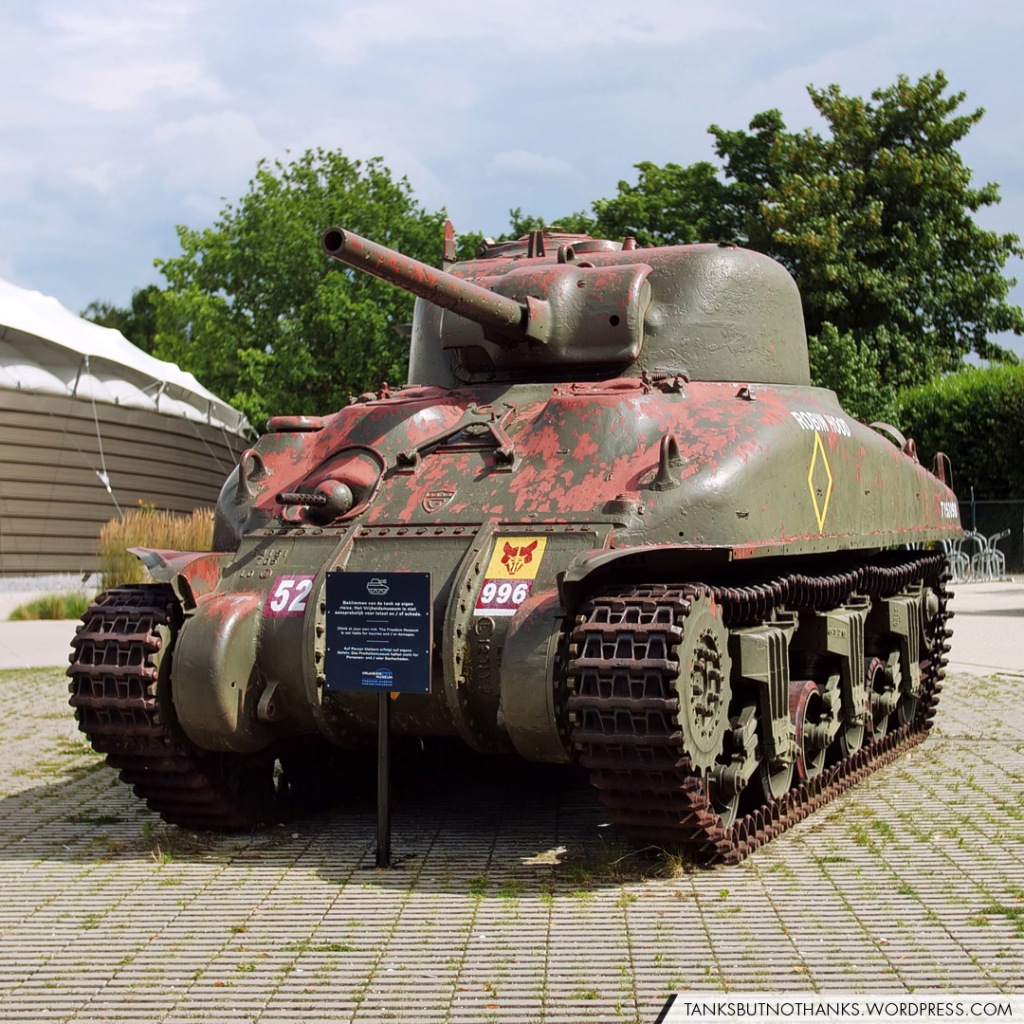
Full metal footprint
The Grizzly I cruiser tank was basically a Canadian licence-built M4A1. It is sometimes falsely referred to as the M4A5, but the Americans had actually applied this designation to the Ram II in February 1942. Apart from a few minor changes the Grizzly and the M4A1 were identical. Modifications included different stowage arrangements, the installation of a British Number 19 wireless set and a smoke mortar in the turret. Later Grizzlies were equipped with the Canadian dry pin tracks which had a shorter pitch length and required a 17-teeth drive sprocket. This aggressive all-metal track was introduced to save rubber, which at the time was becoming scarce due to the Japanese occupation of South East Asia. The rubber shortage also sparked the development of several metal track types in the US, but they were all designed to fit the Sherman’s original 13-teeth sprocket. Only a small number of the Grizzlies were sent to Great Britain while the majority stayed with training units in Canada.

Better safe than sorry
Alarmed by the Fall of France in 1940, Canada had developed the Ram I cruiser tank based on the US-built M3 Lee/Grant. However, in 1942 the decision was made to equip Canada’s armoured formations with the same medium tank as their American and British allies. After some delays the production lines at the Montreal Locomotive Works were switched from the Ram II to the Grizzly in August 1943. But as it soon became clear that the American factories were perfectly able to churn out enough Shermans to supply all allied armies, production of the Grizzly gun tank was halted in December 1943 after only 188 completed vehicles. Some of the Grizzly’s components stayed in production nonetheless: They were used for the successful self-propelled gun Sexton II.
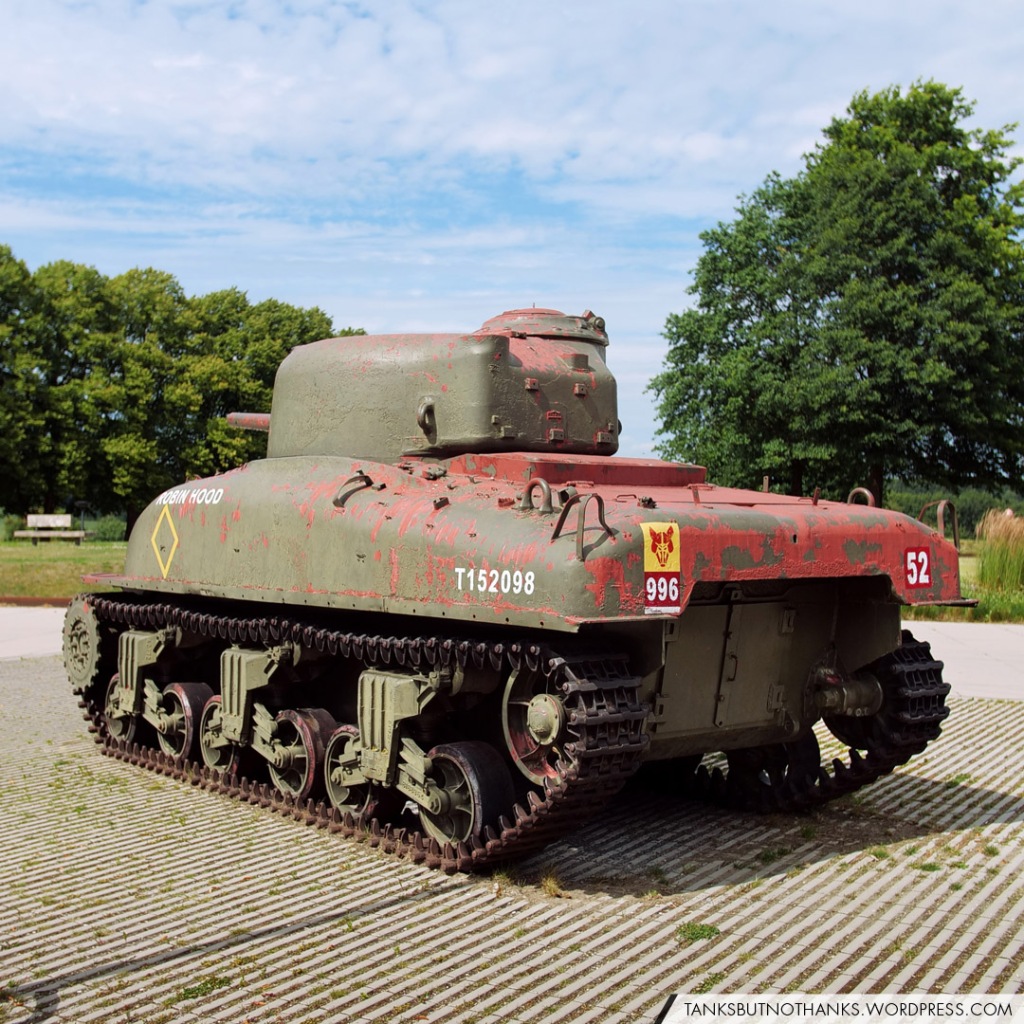
Liberation monument
This particular vehicle is located at the Vrijheidsmuseum (= Freedom Museum) in Groesbeek. It was painted to resemble the Regimental HQ command tank of the Sherwood Rangers Yeomanry – one of the three tank regiments in the British 8th Armoured Brigade, whose insignia was a red fox‘s mask on a yellow background. The yellow diamond stood for the Regimental Headquarters Squadron, while tanks in A Squadron were marked with a triangle, those in B Squadron with a square and C Squadron with a circle. The SRY was the first British unit to cross into German territory in September 1944 and its tanks played a vital role in the liberation of the Groesbeek area. However, they were not operating Canadian-built Grizzlies, but American-supplied 75 mm Shermans and Firefly conversions. Originally a Canadian Ram II tank, which had previously been serving as a gate guard at Amersfoort, was placed at the Sherwood Rangers Monument in Groesbeek. In 1988 it was swapped for a more appropriate Sherman from The Tank Museum in Bovington. This vehicle, which was at some point equipped with the late vision cupola, was one of the Grizzlies supplied to Portugal under NATO’s Mutual Defence Assistance Program (MDAP) in the early 1950s. When Portugal modernised their fleet in the 1980s, many of their tanks were sold to British museums and private collectors. In 2010 the Groesbeek Grizzly was briefly restored in Wakefield, UK and it now resides in the Vrijheidsmuseum’s parking lot.
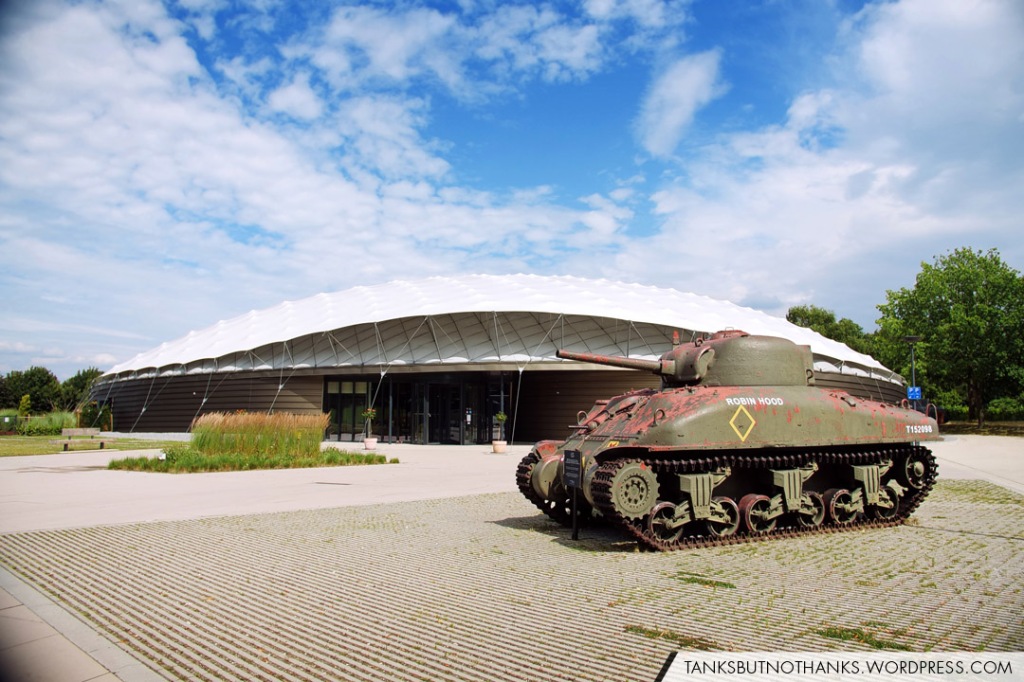
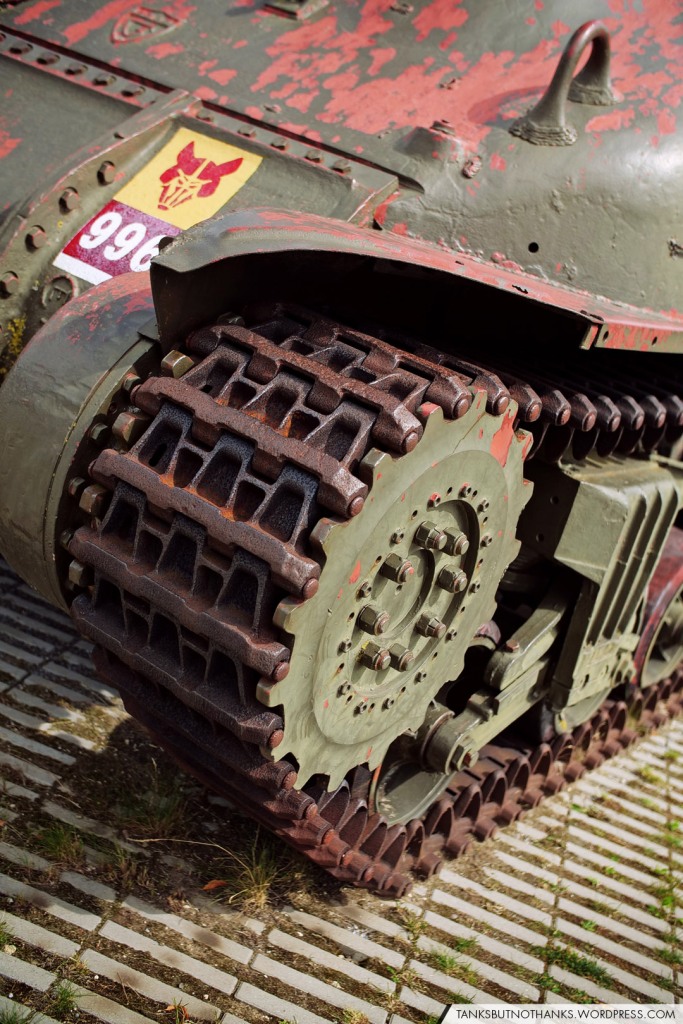
tanks_butnothanks
A travelling history nerd with a camera and a mild interest in tanks.
